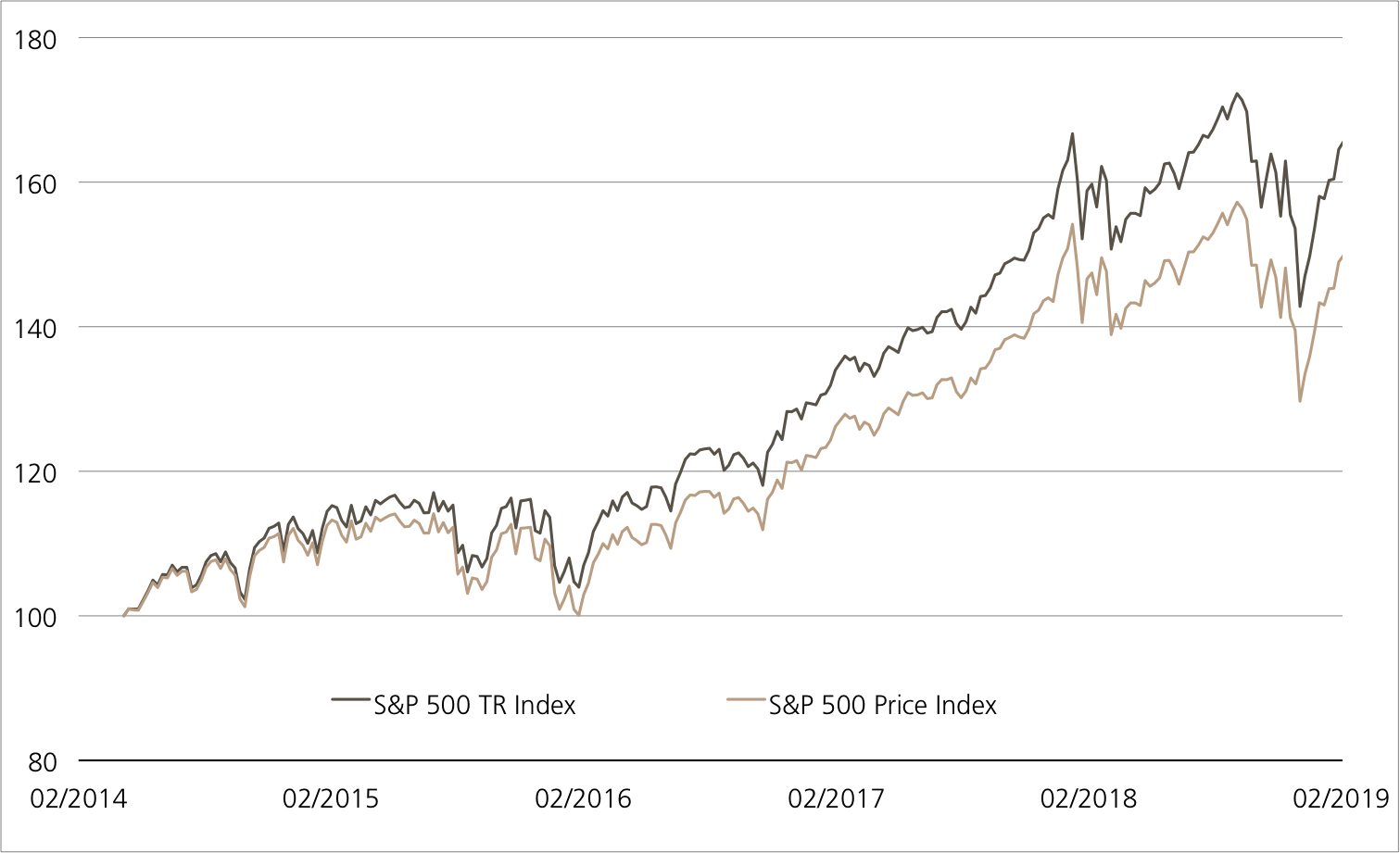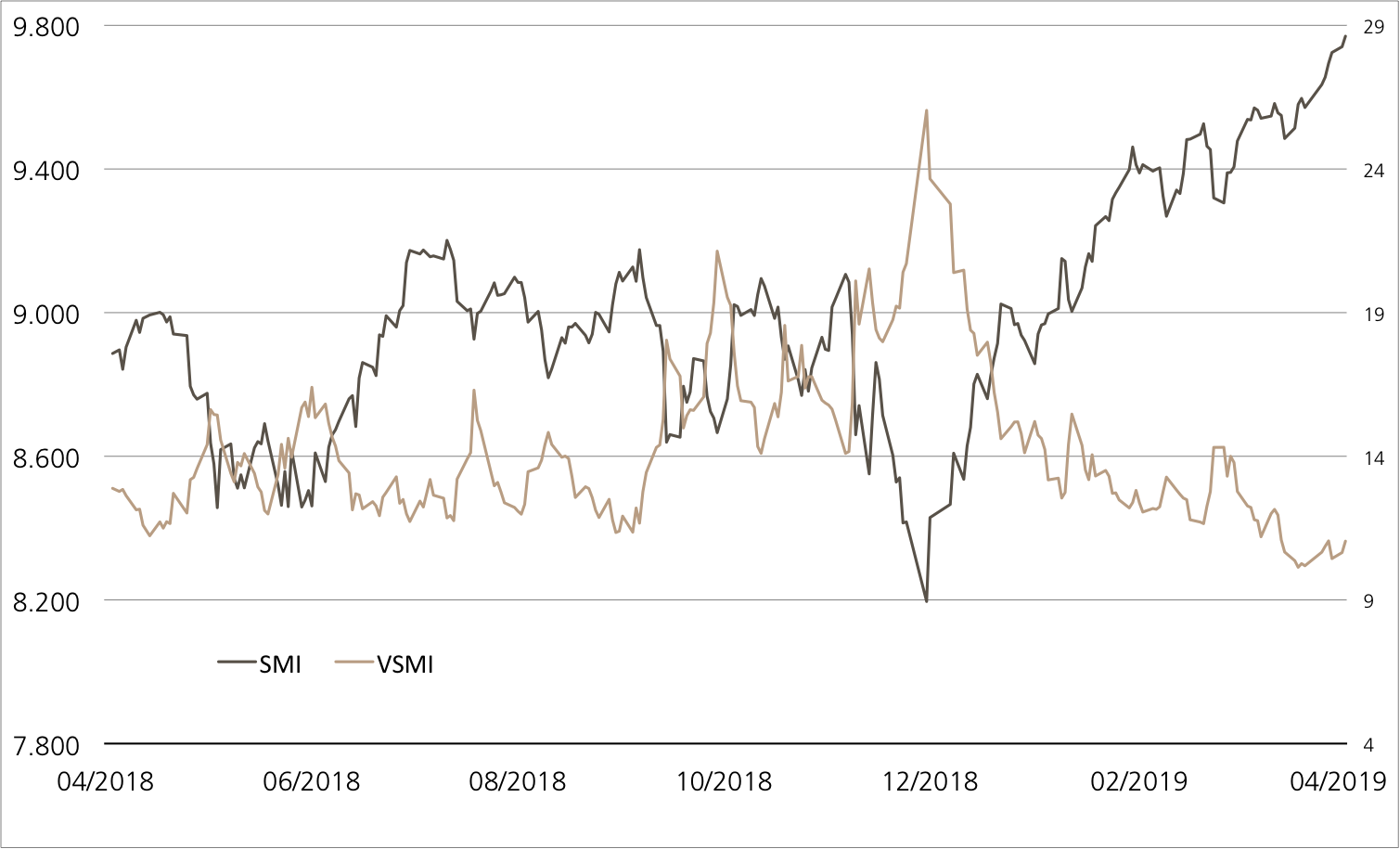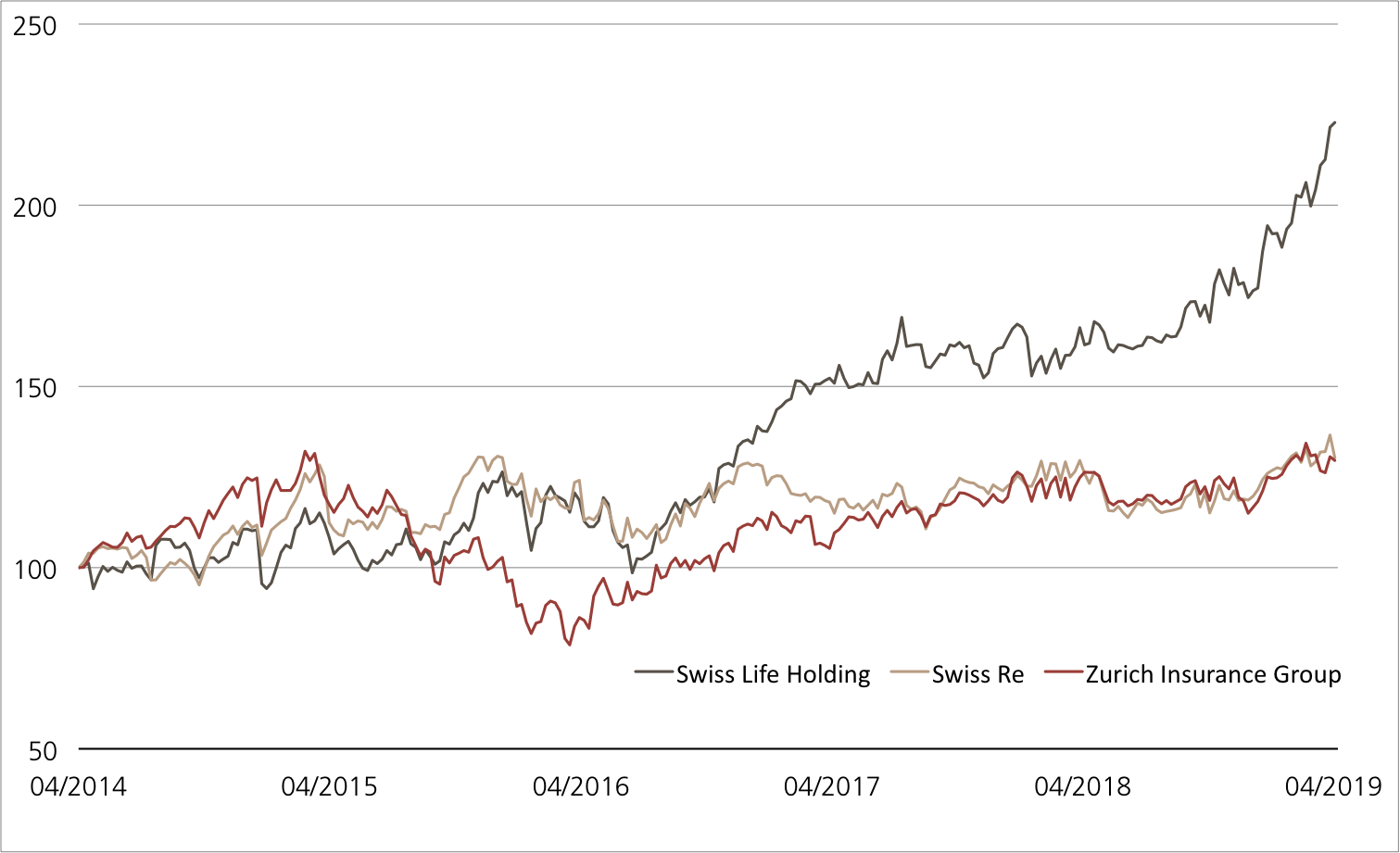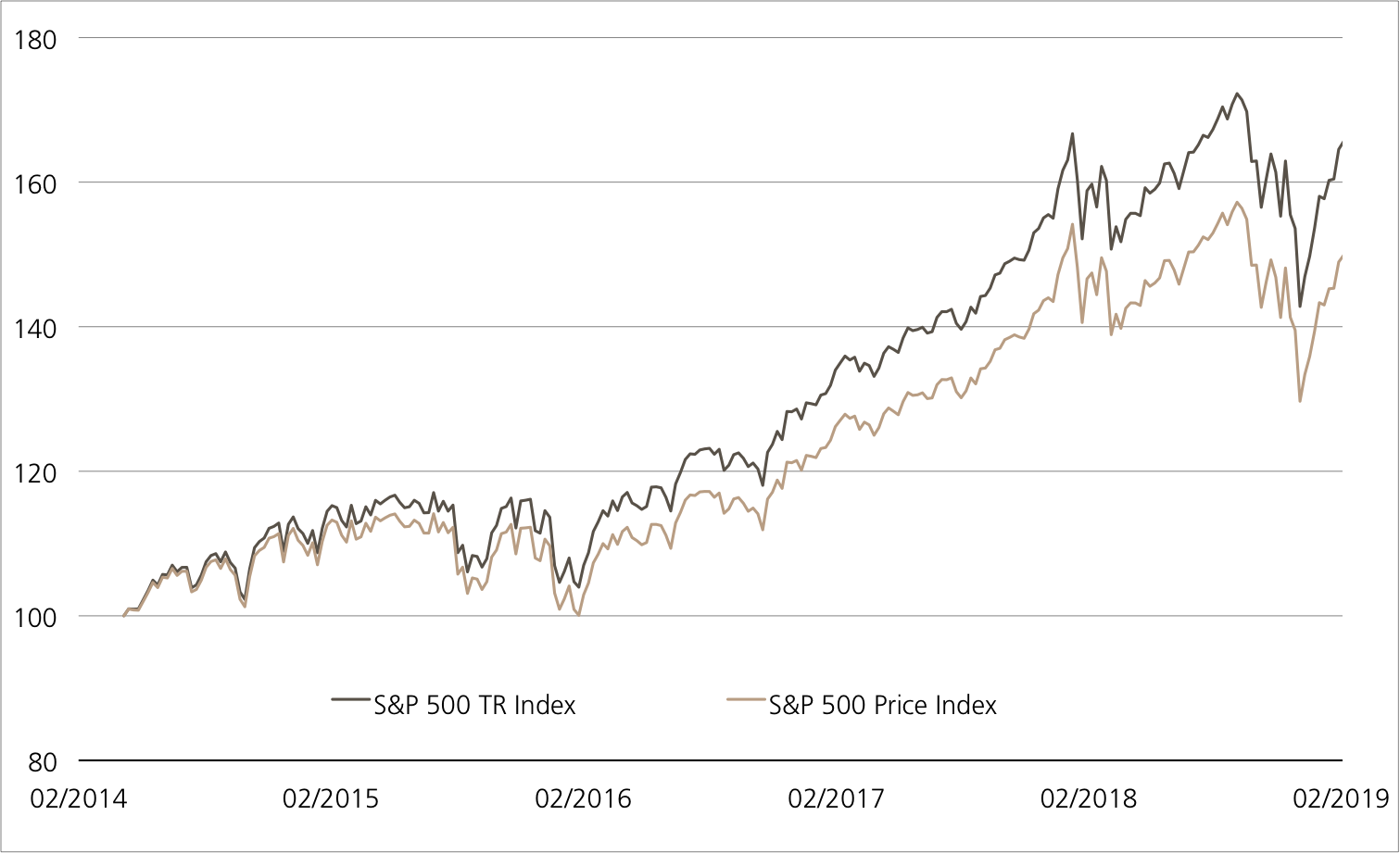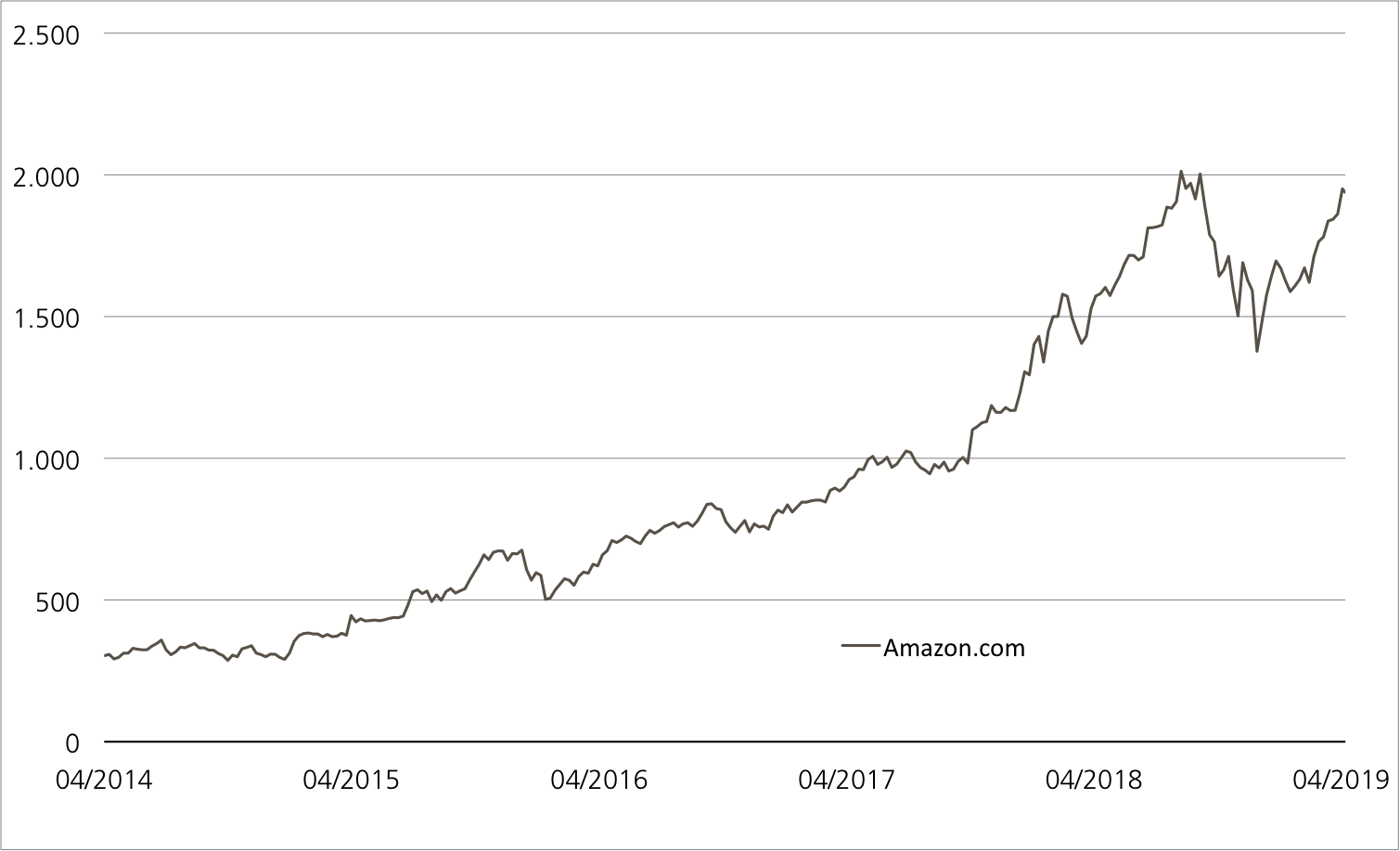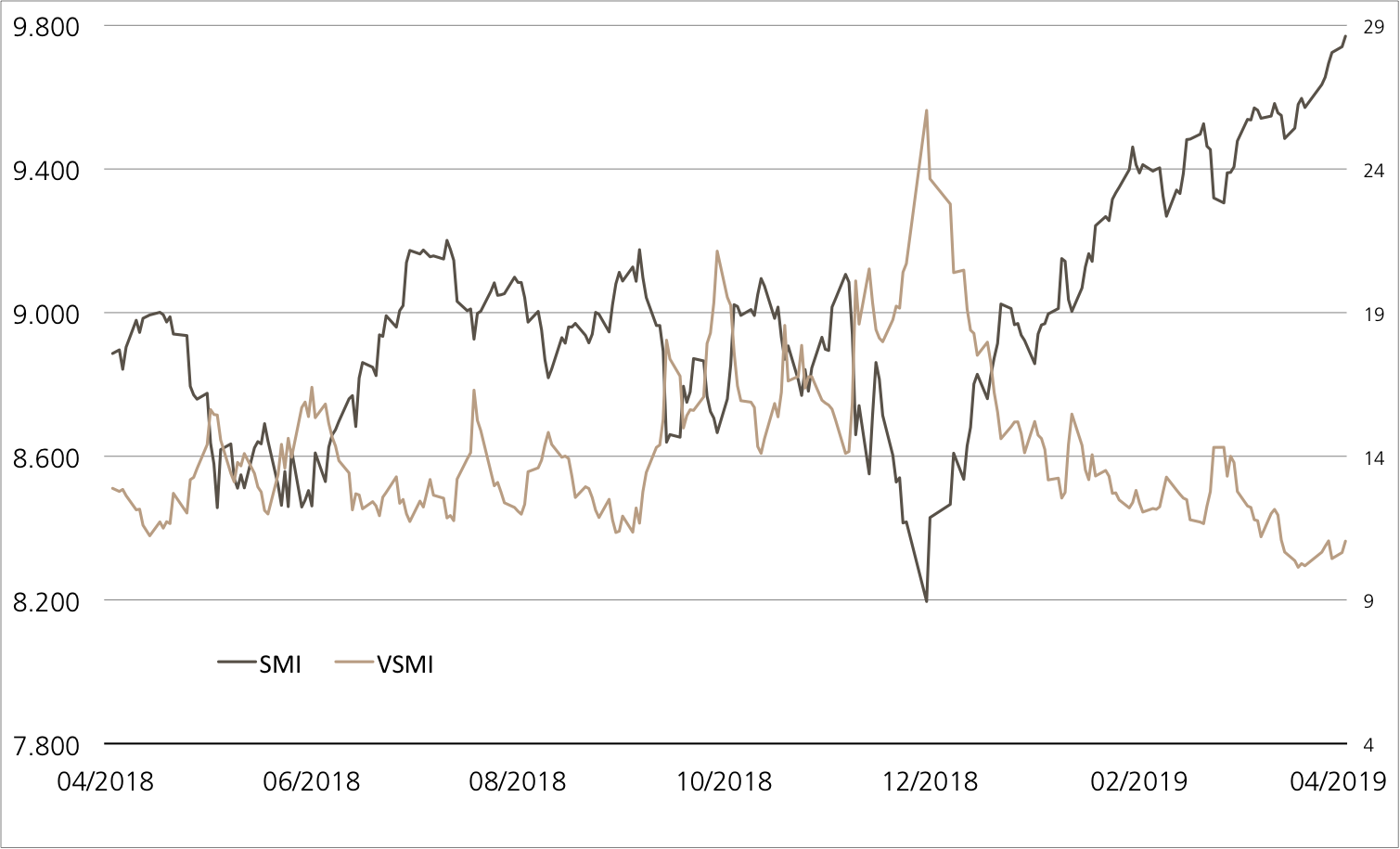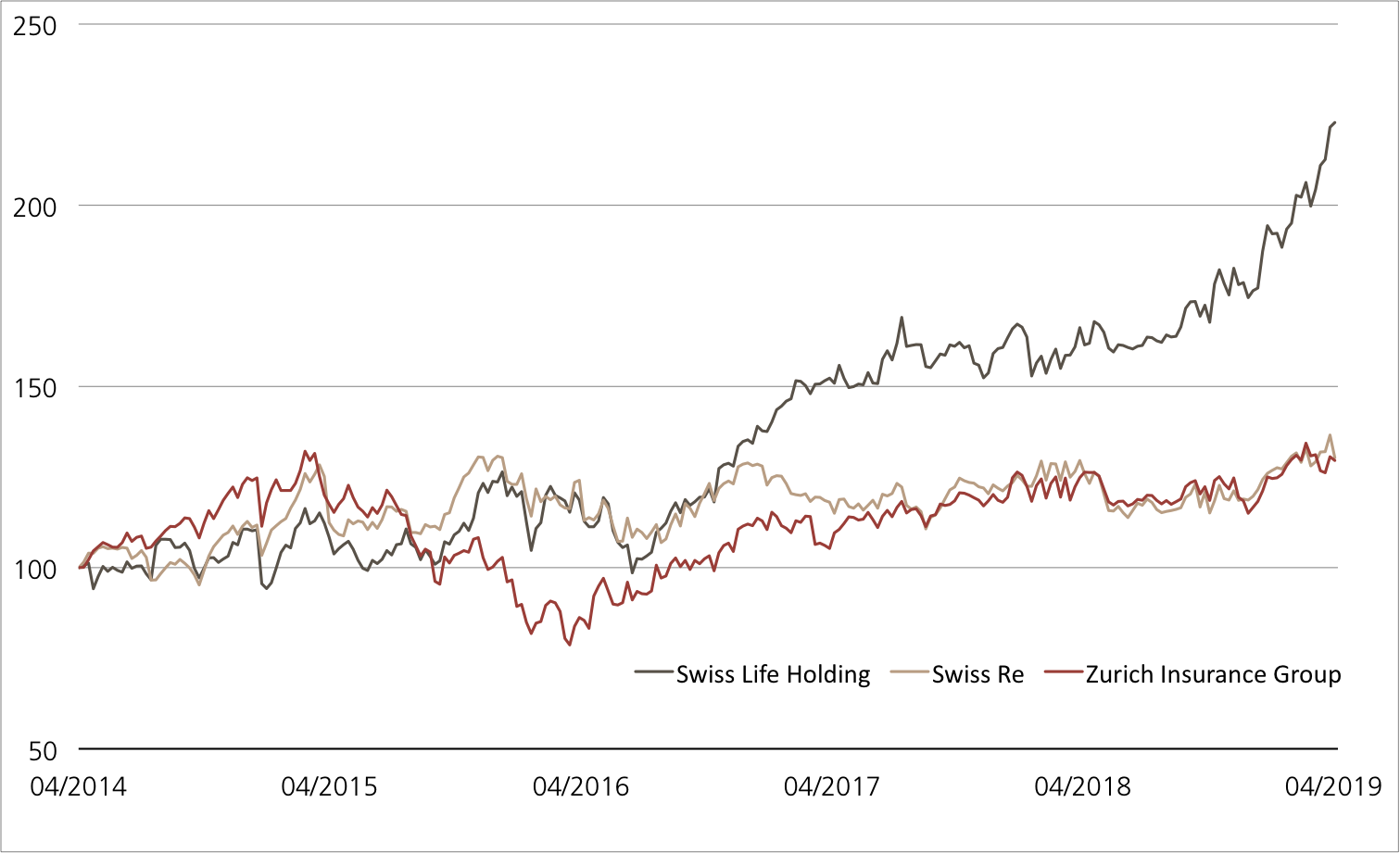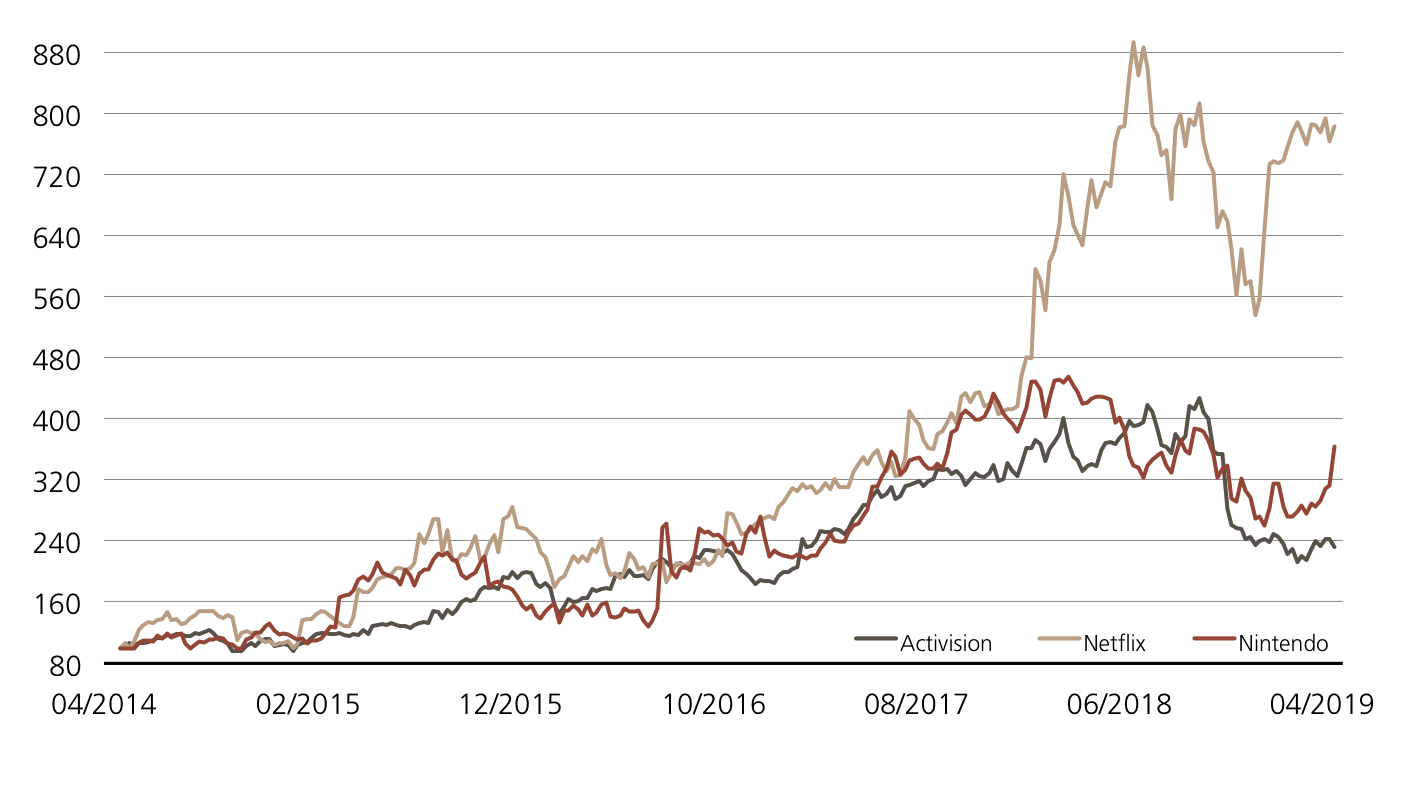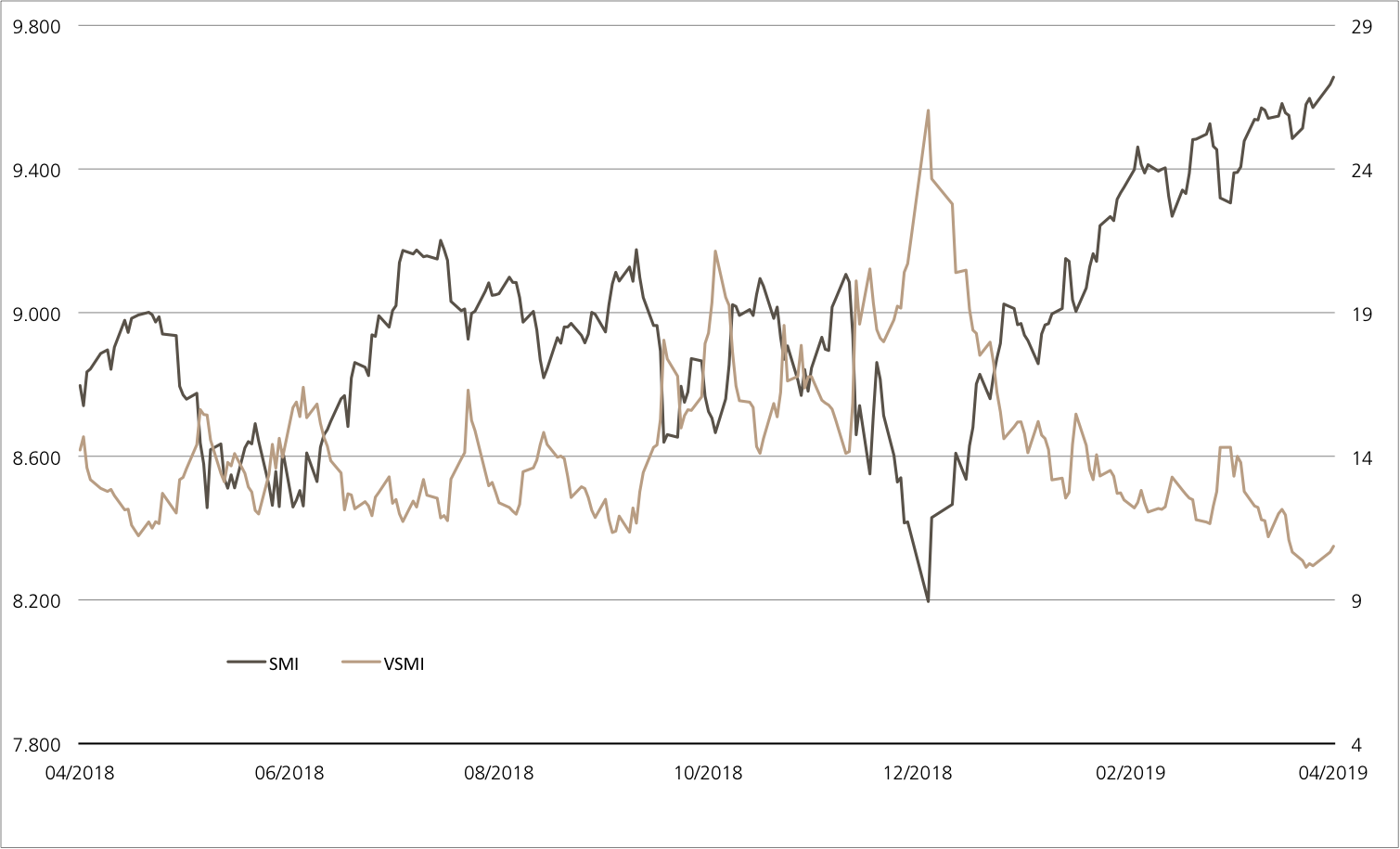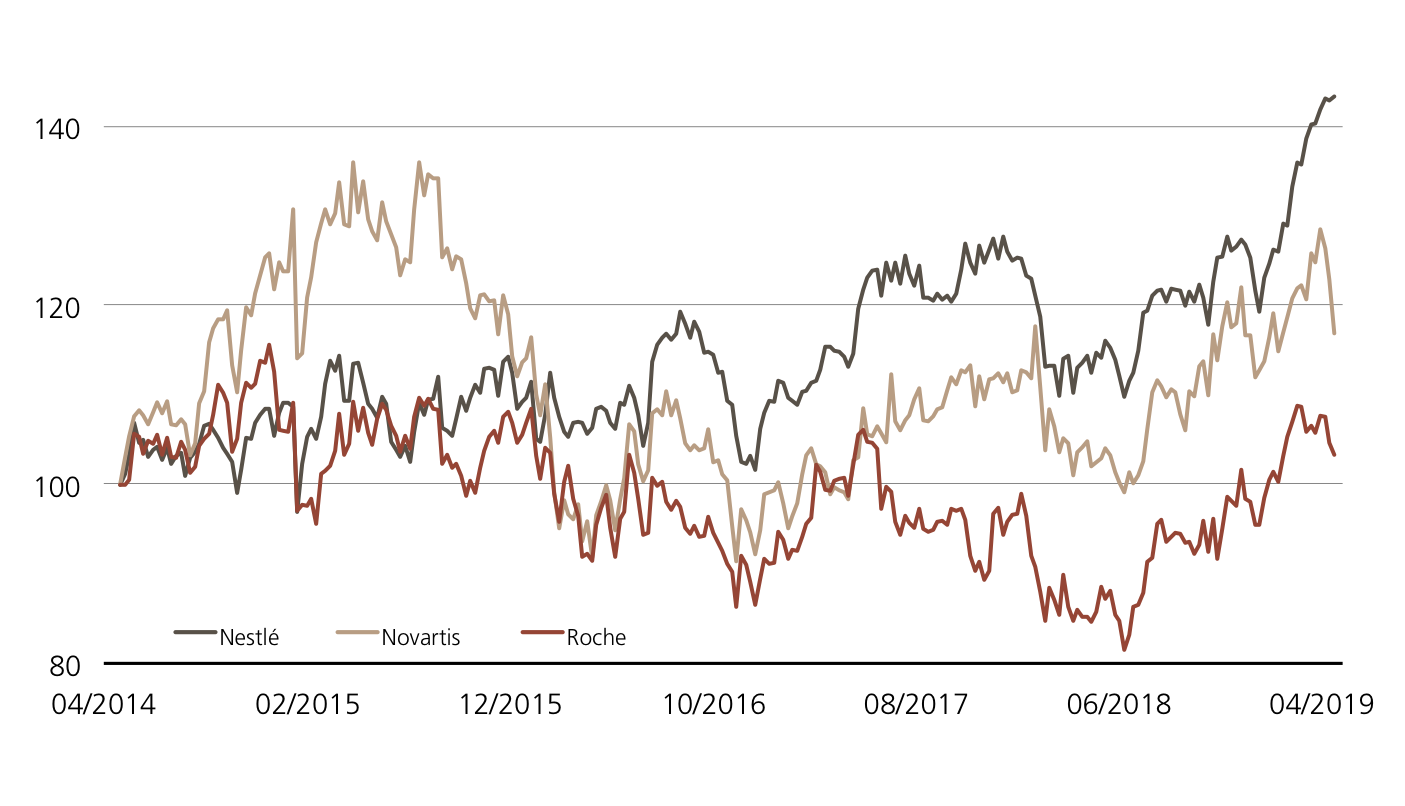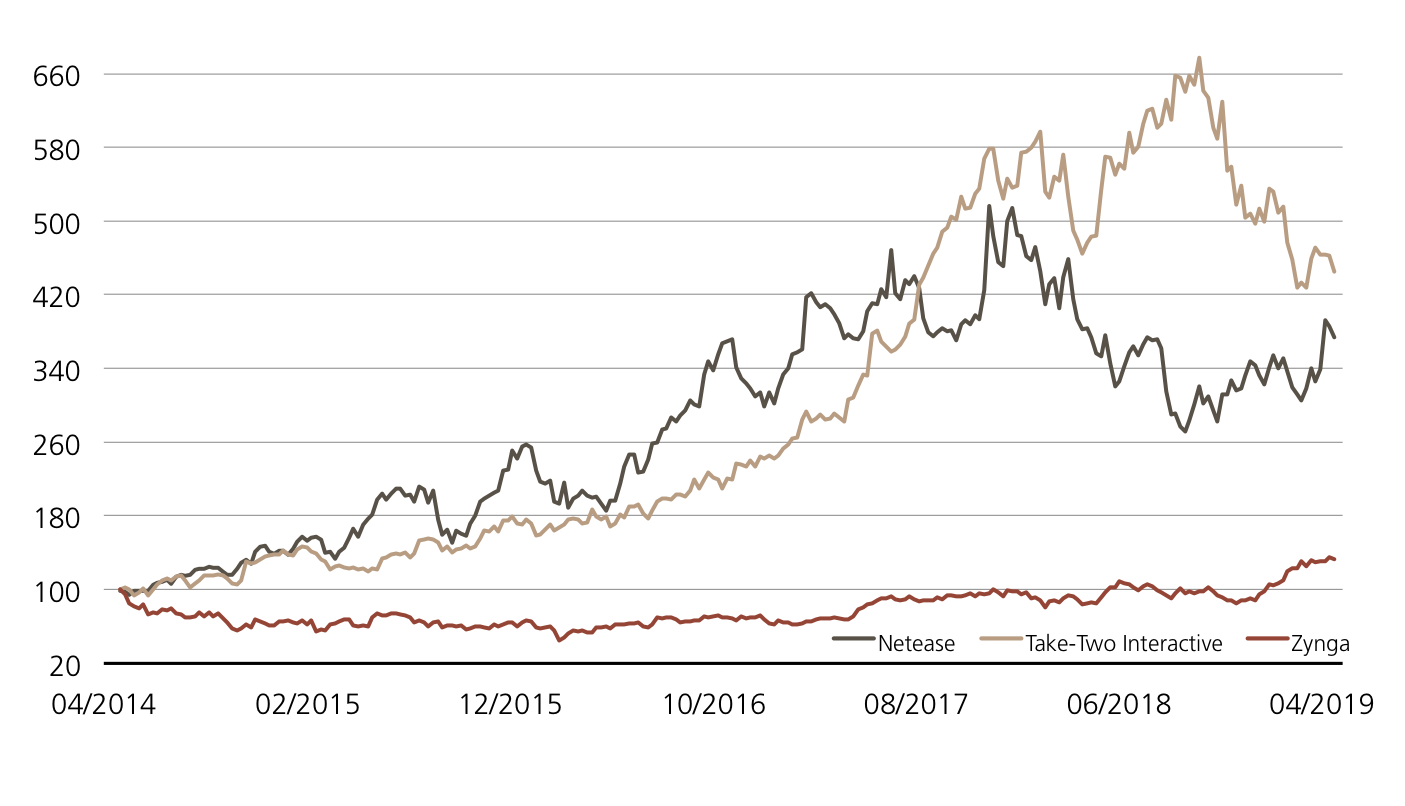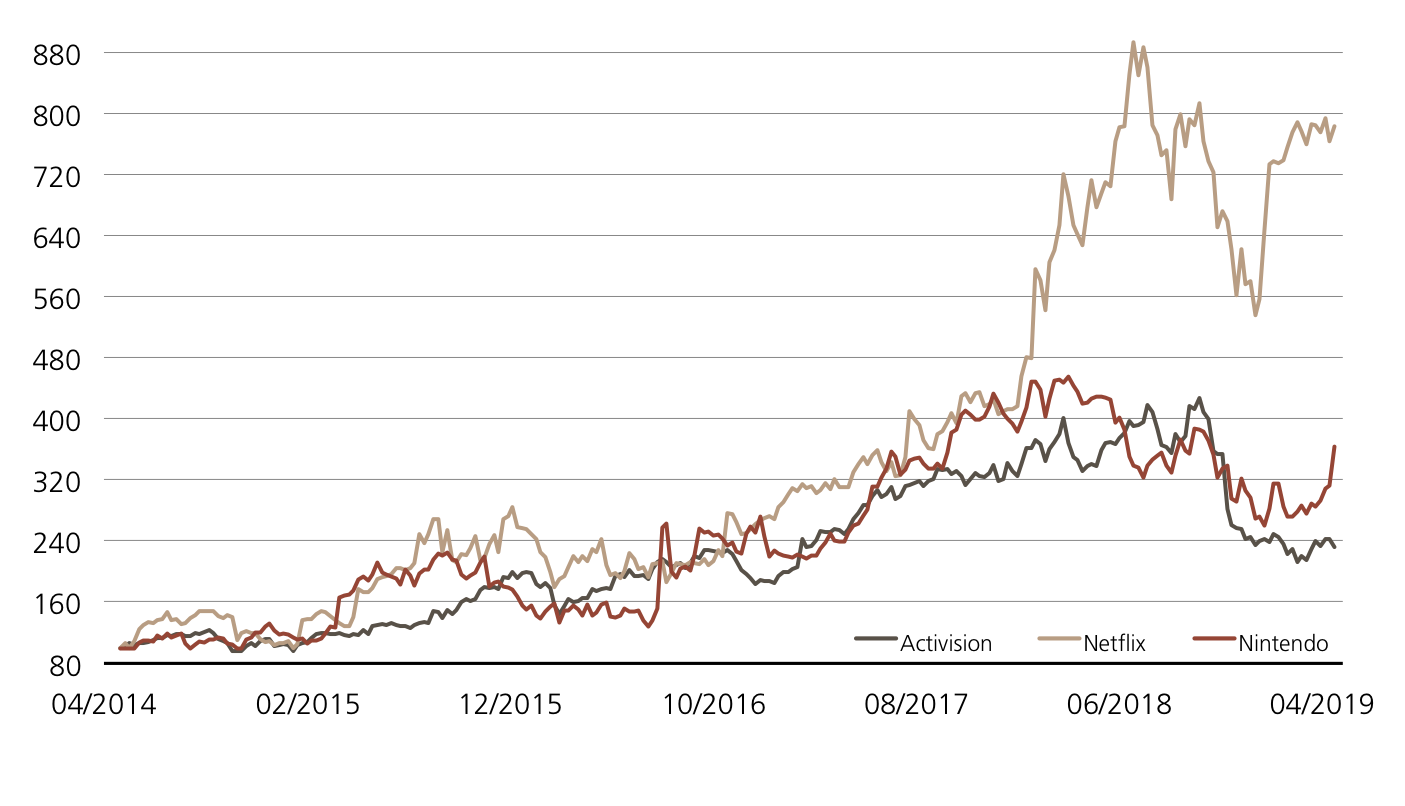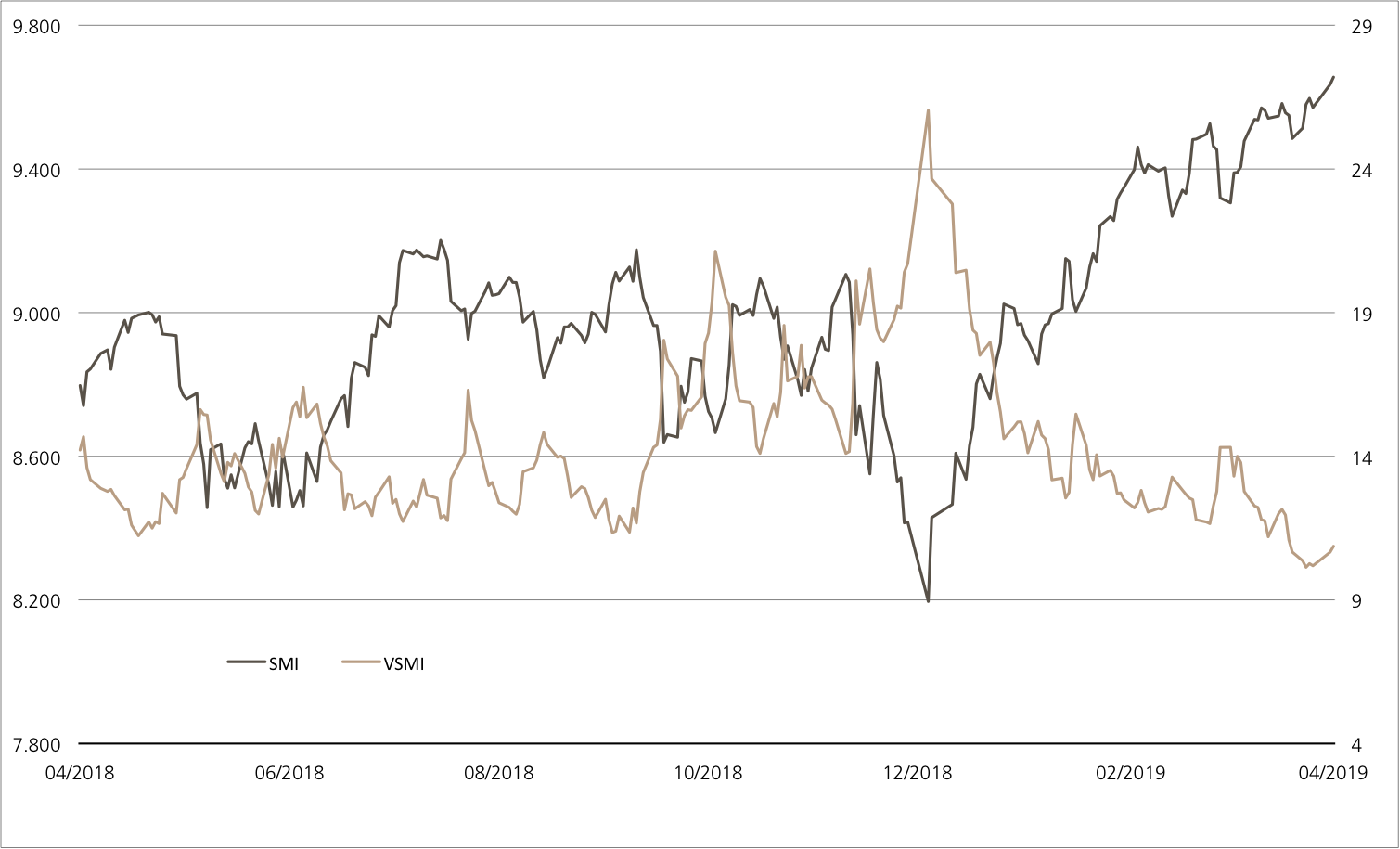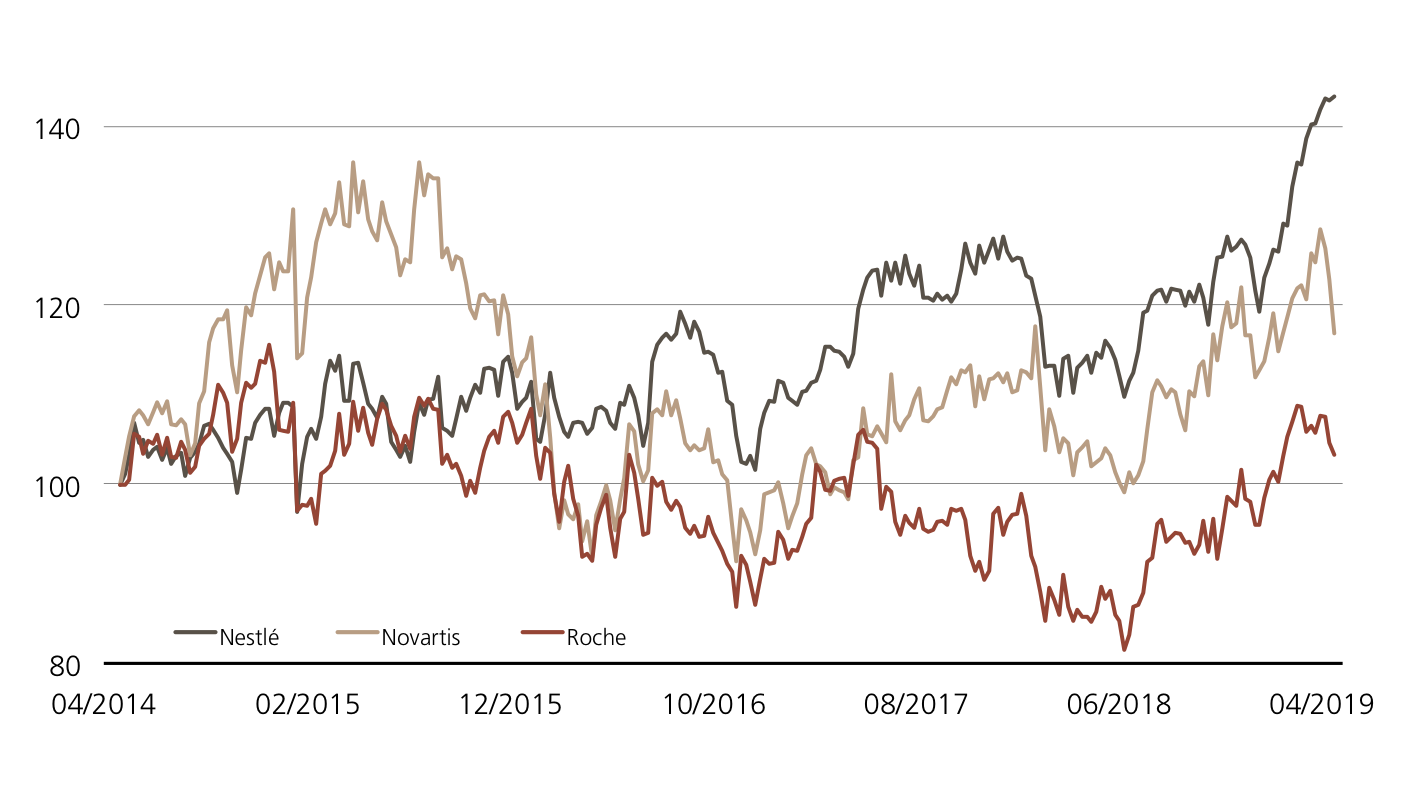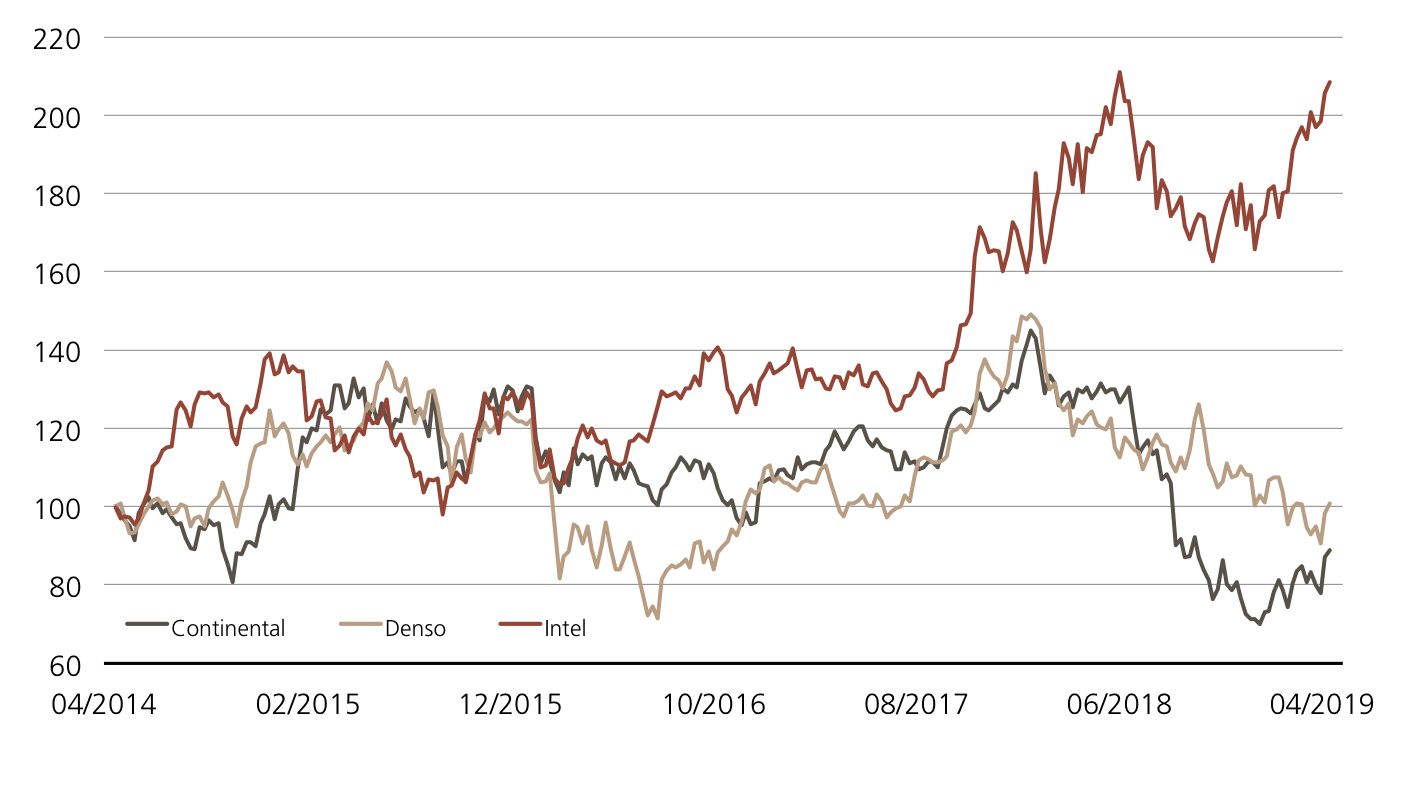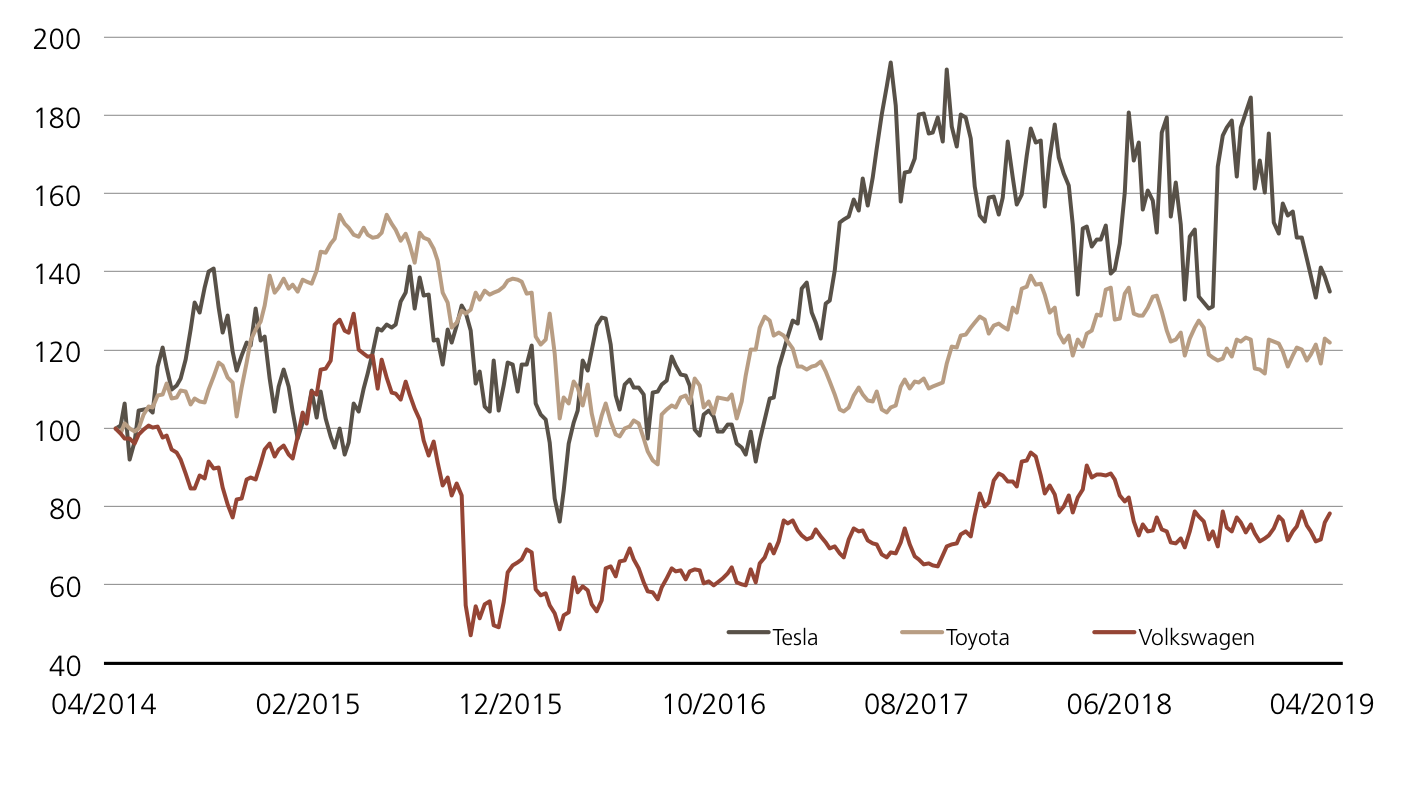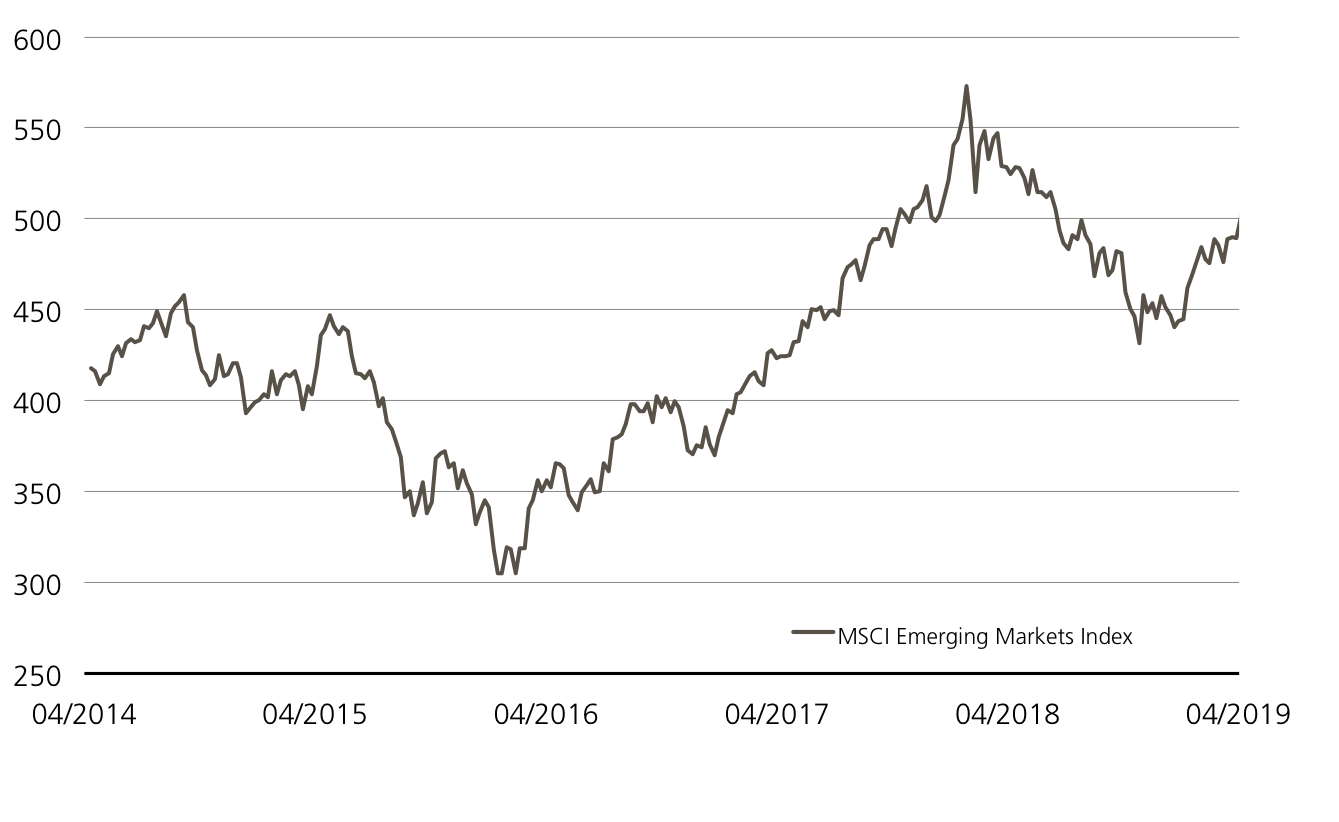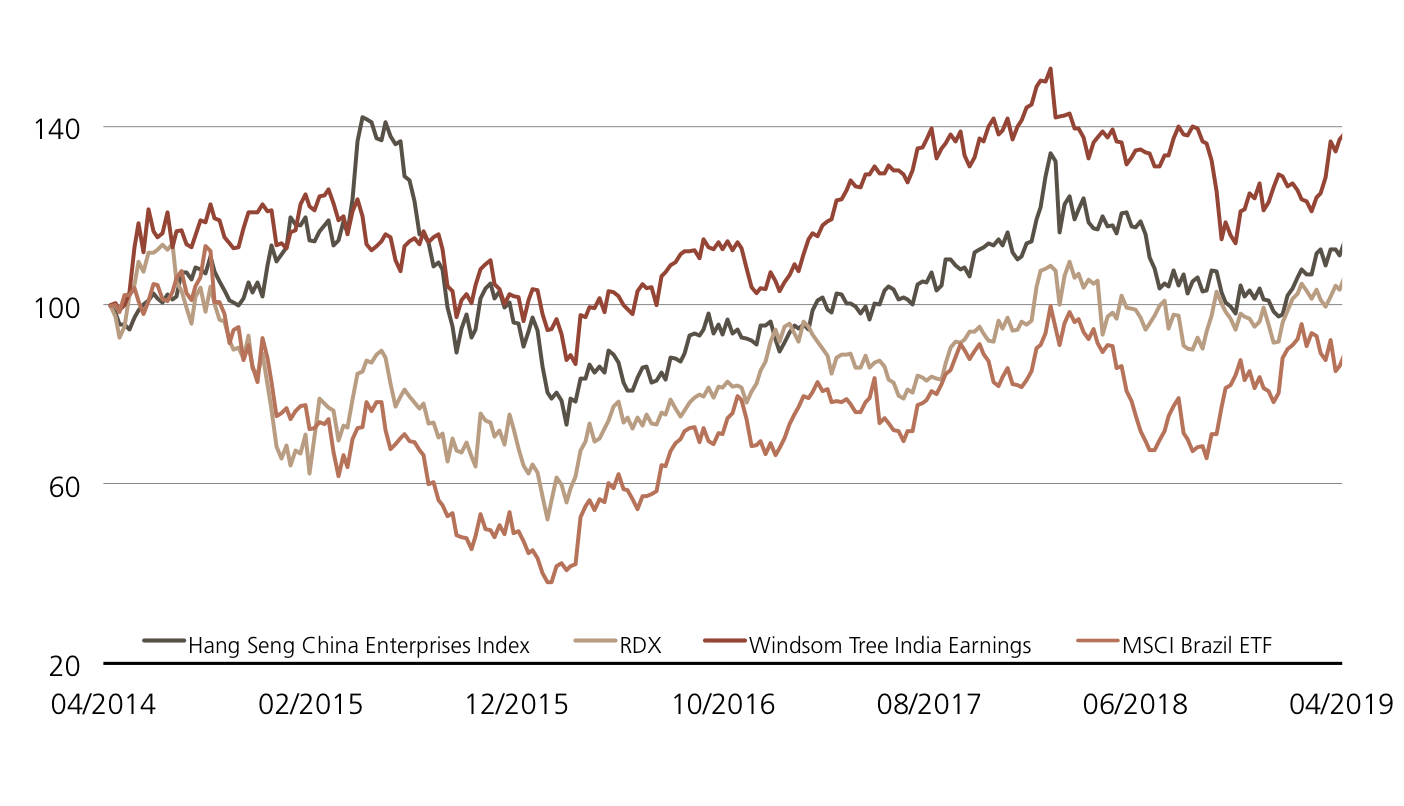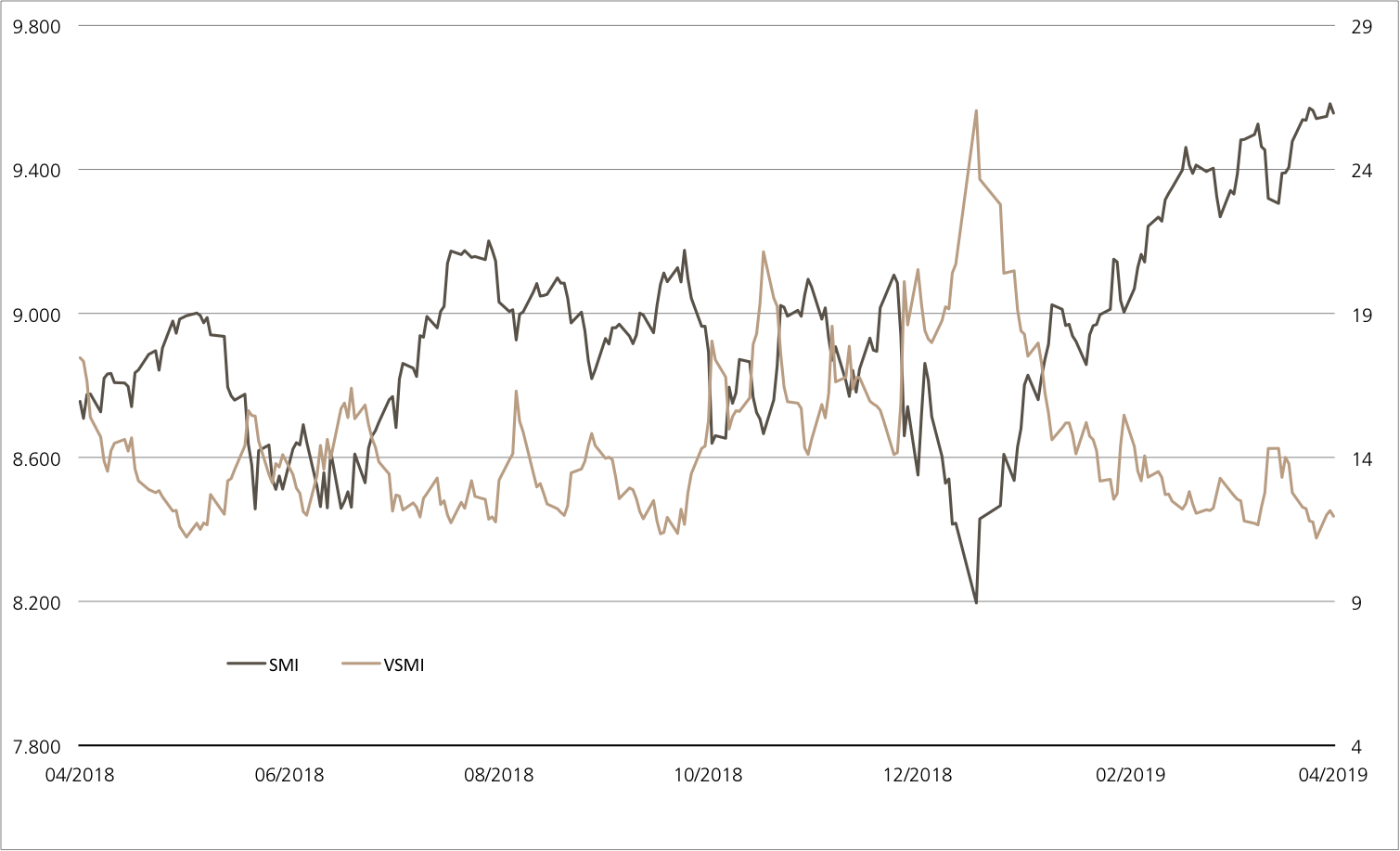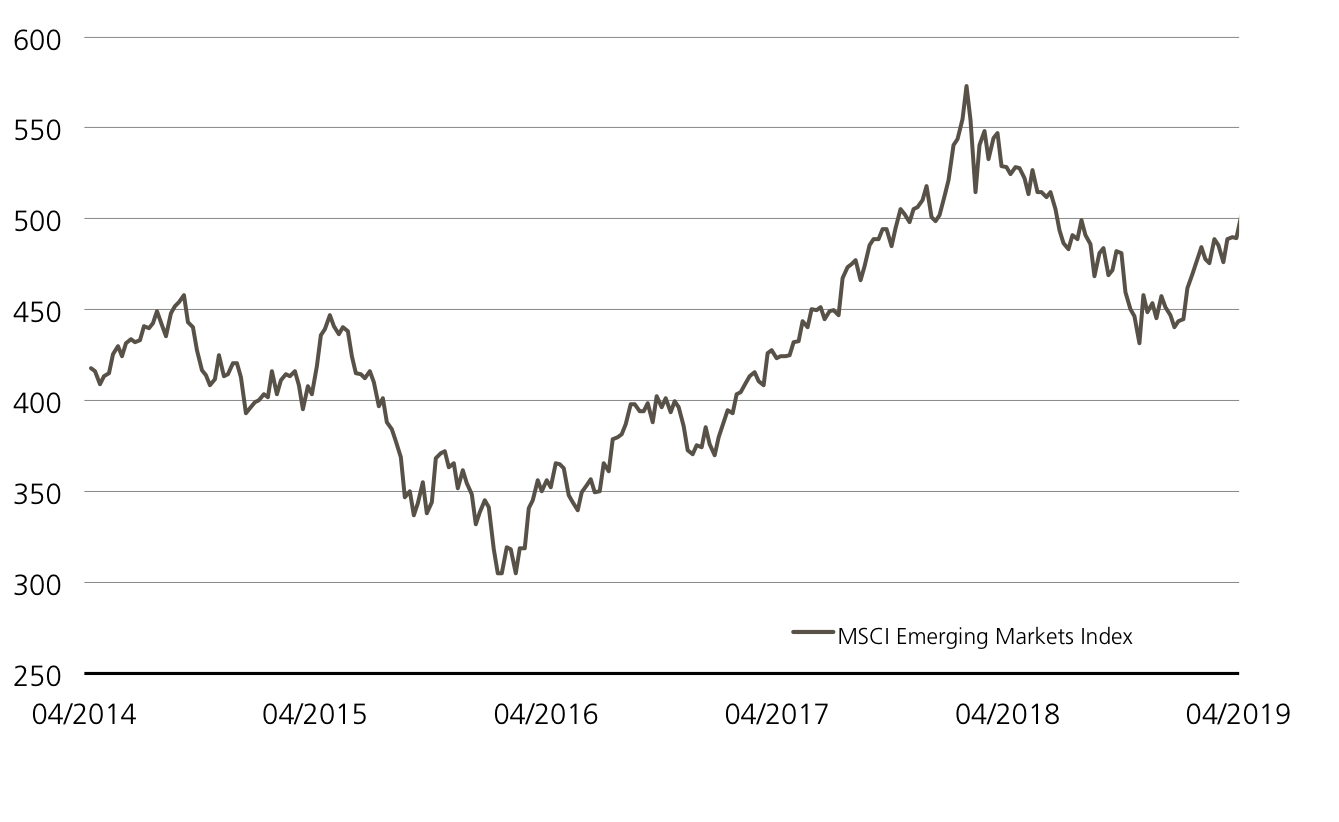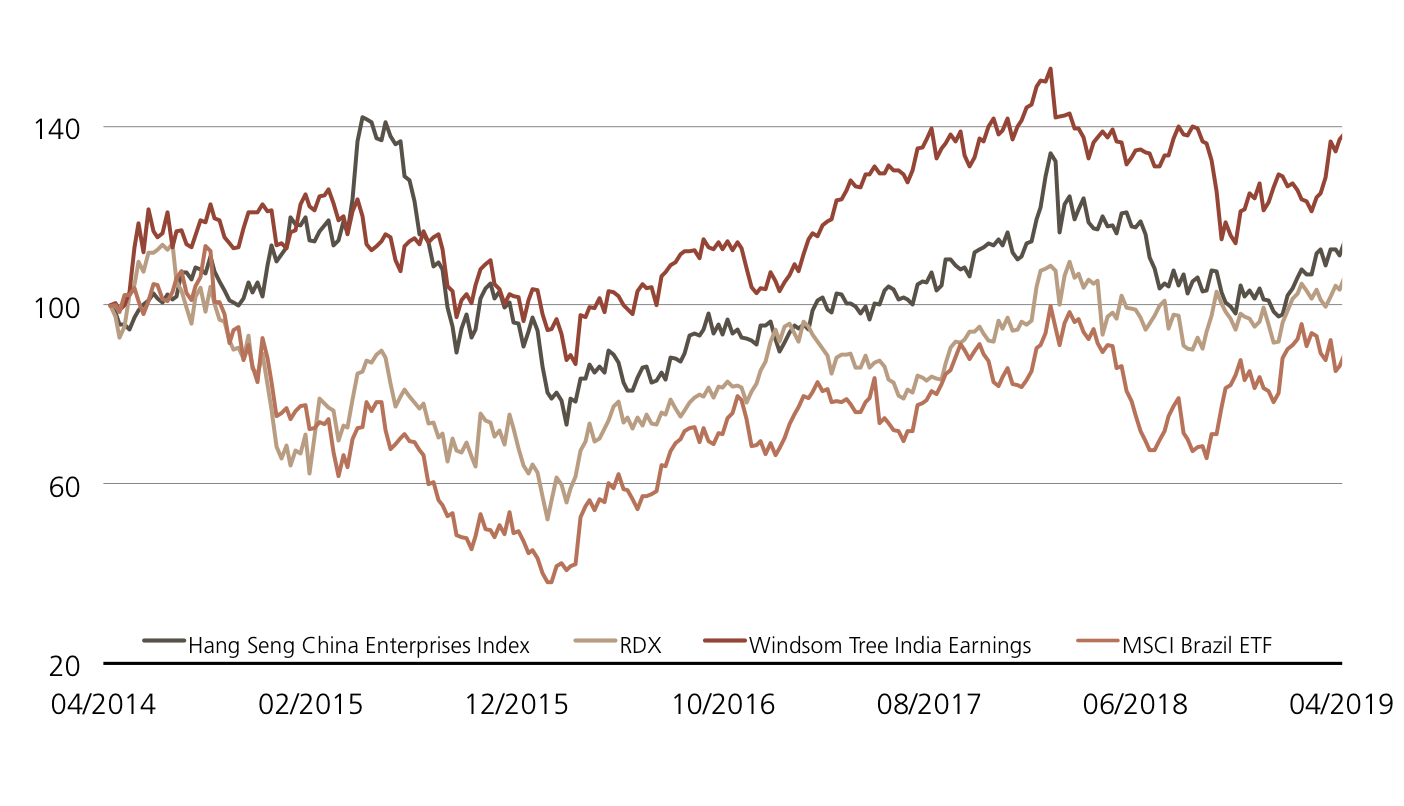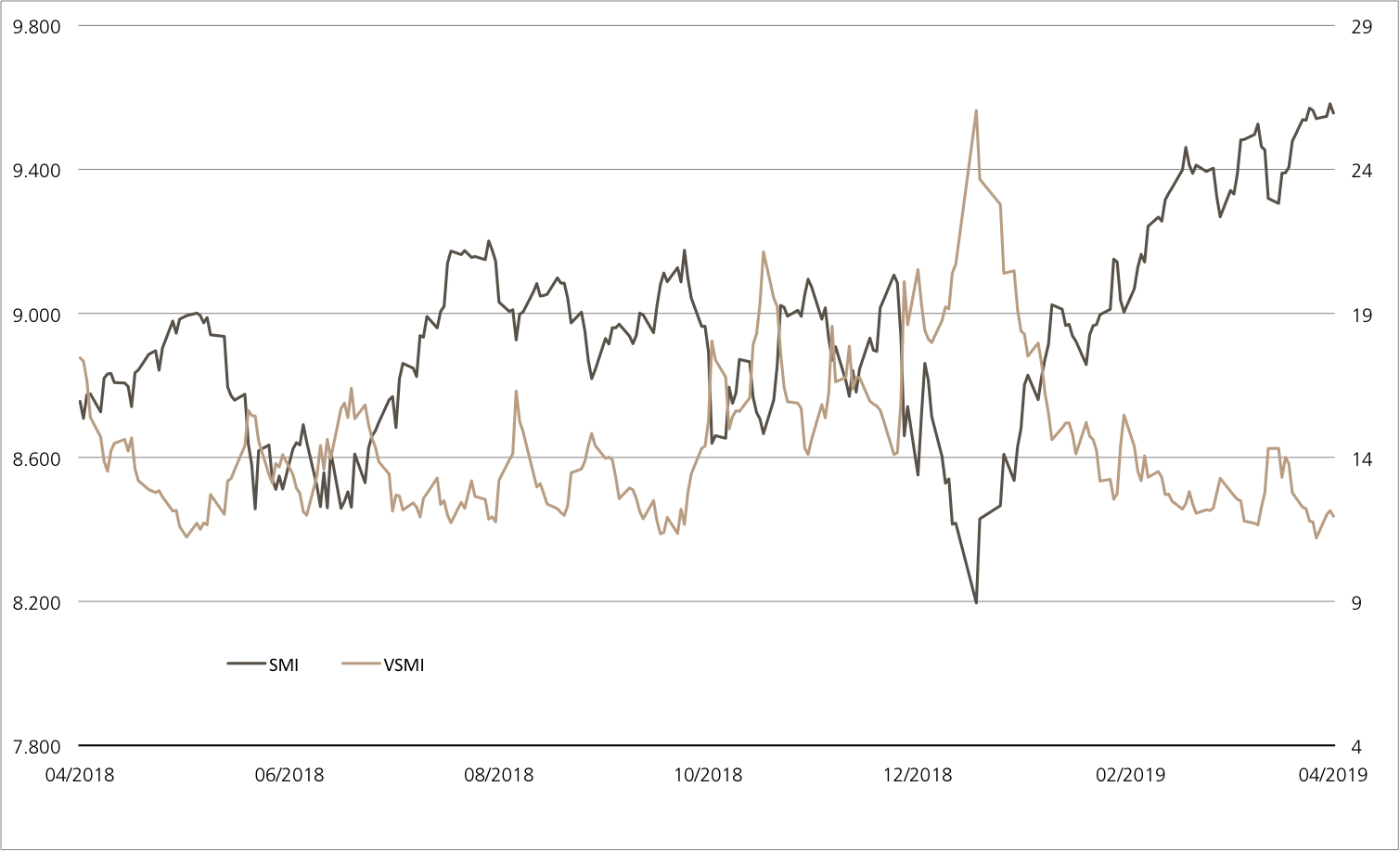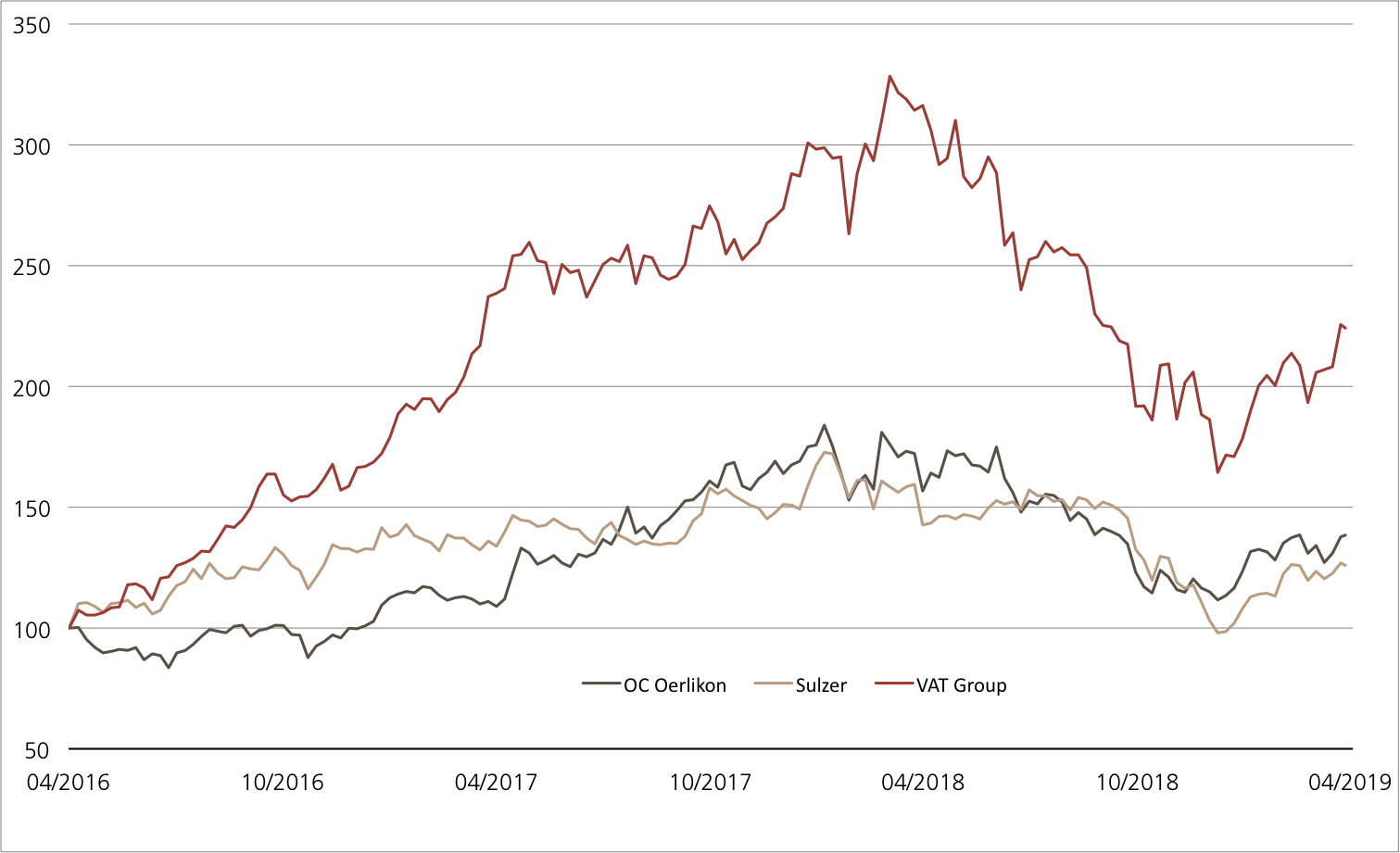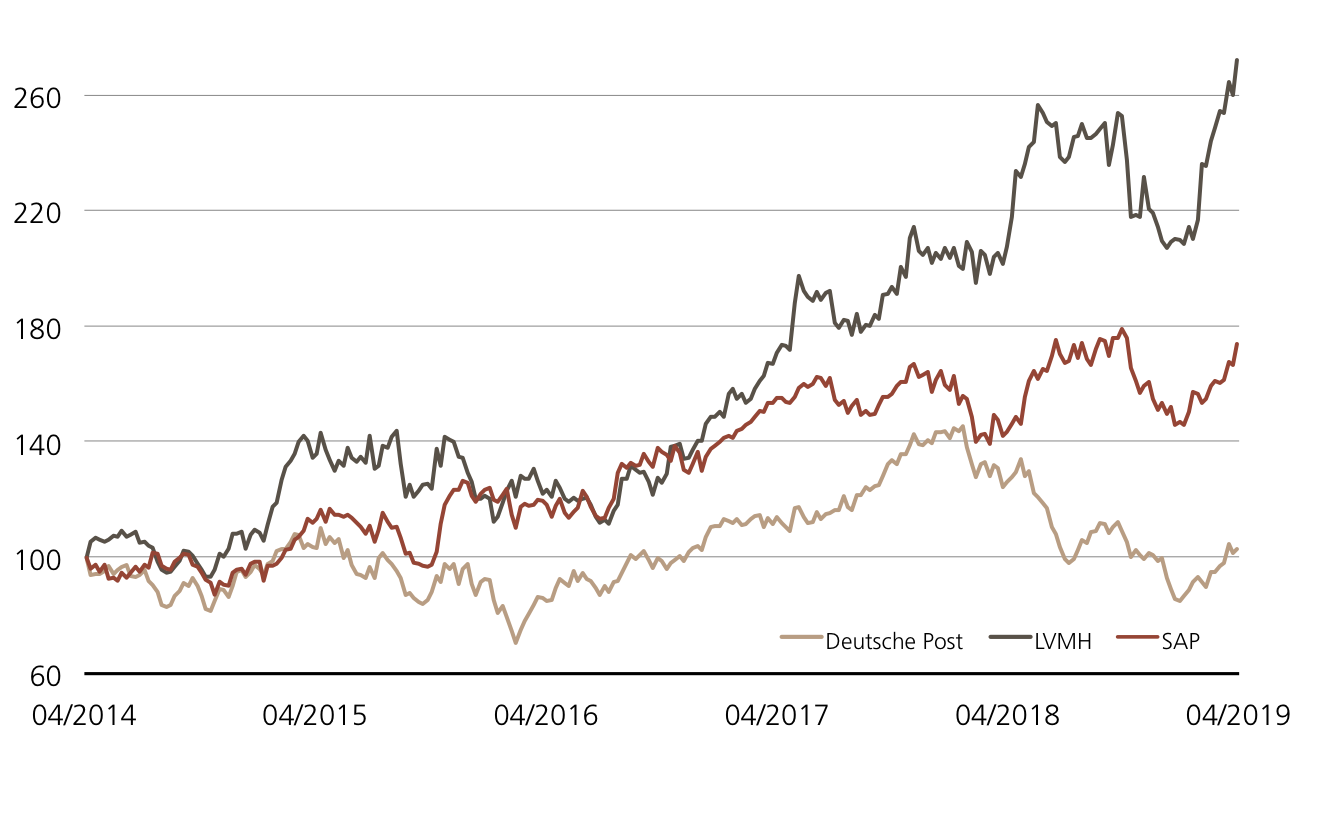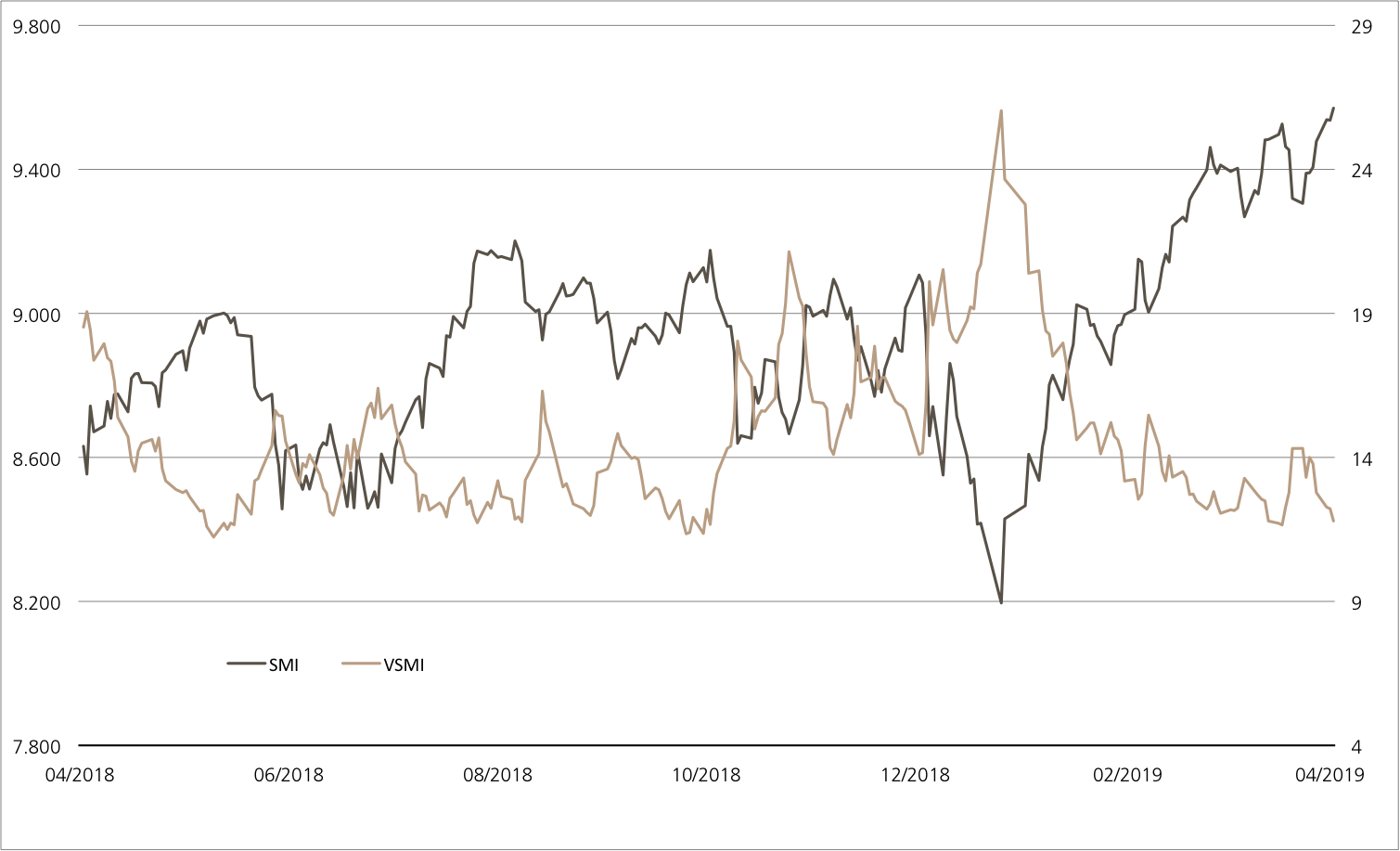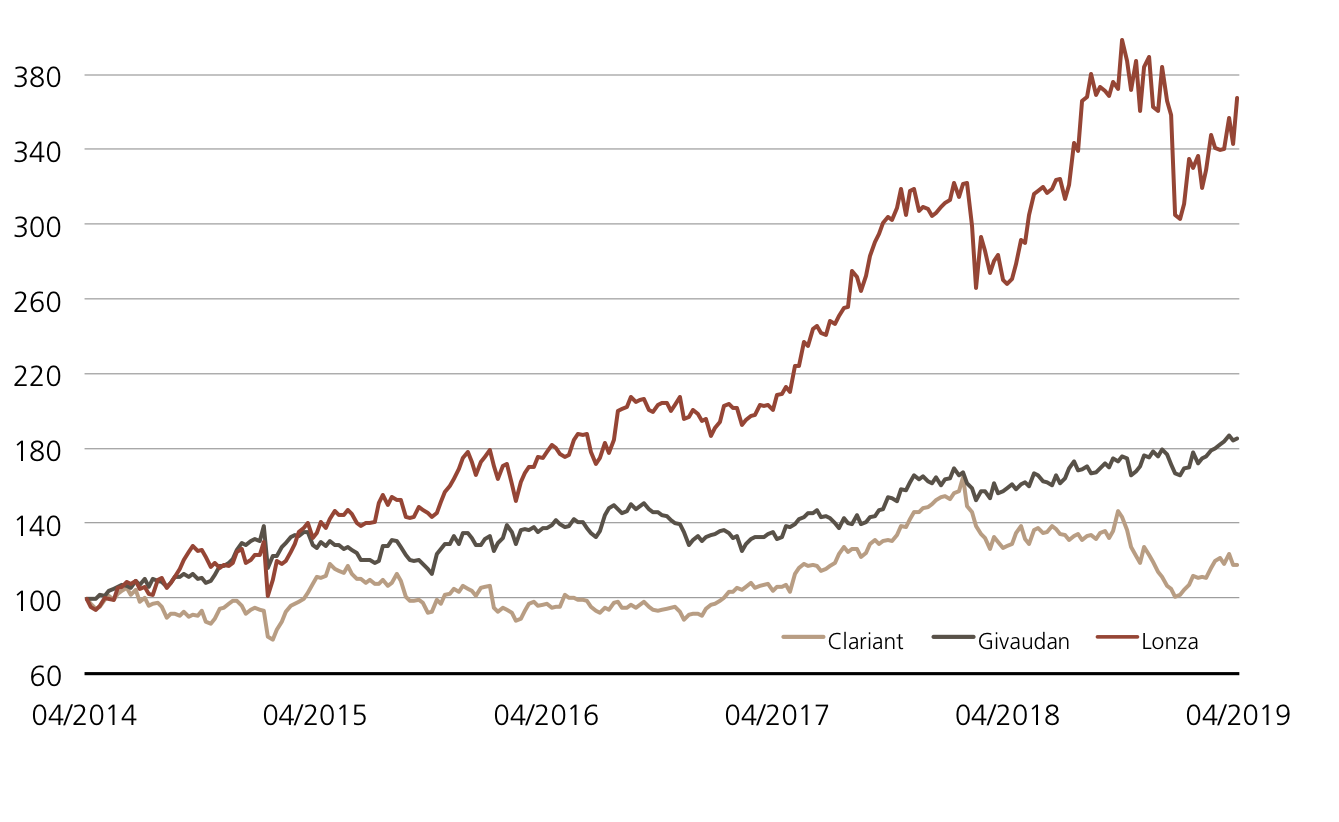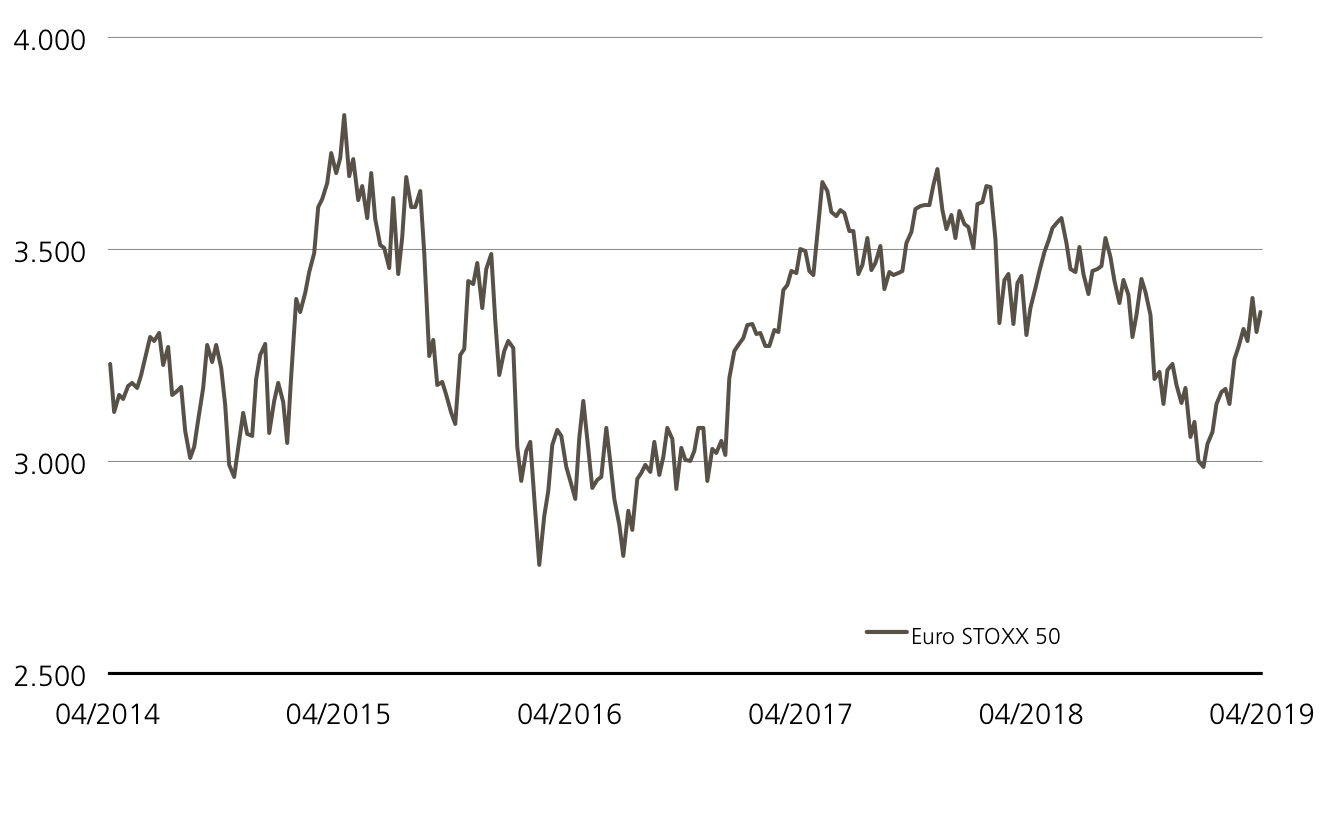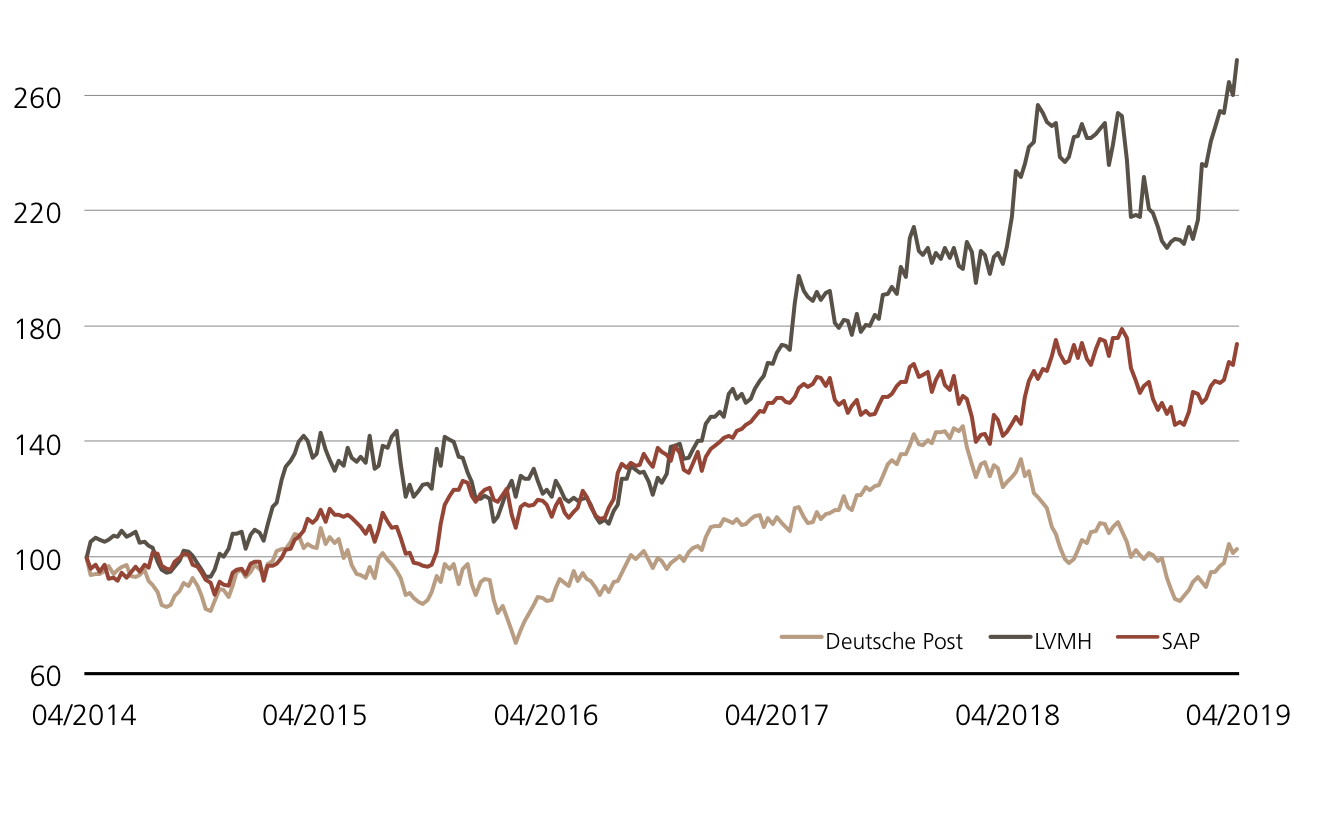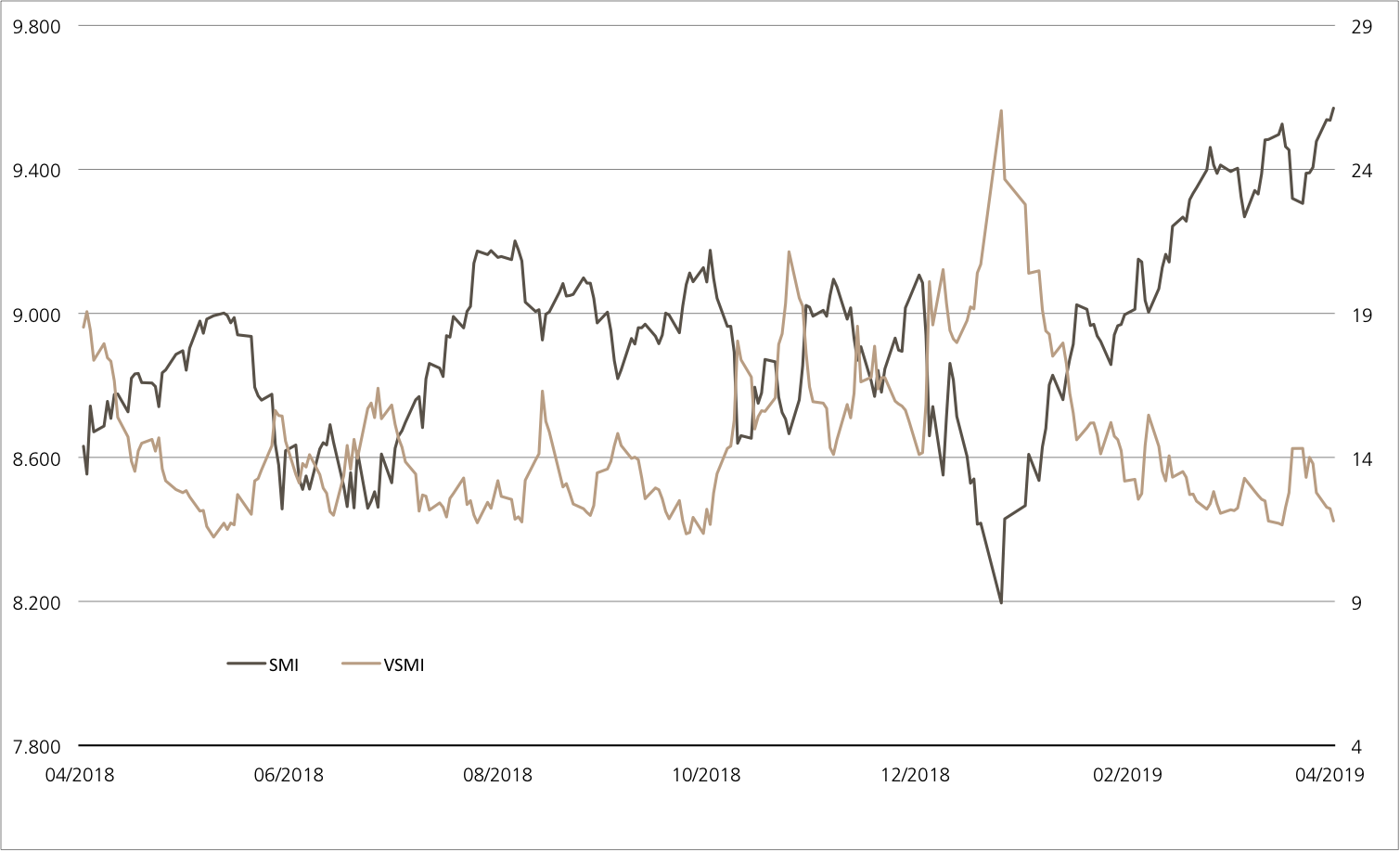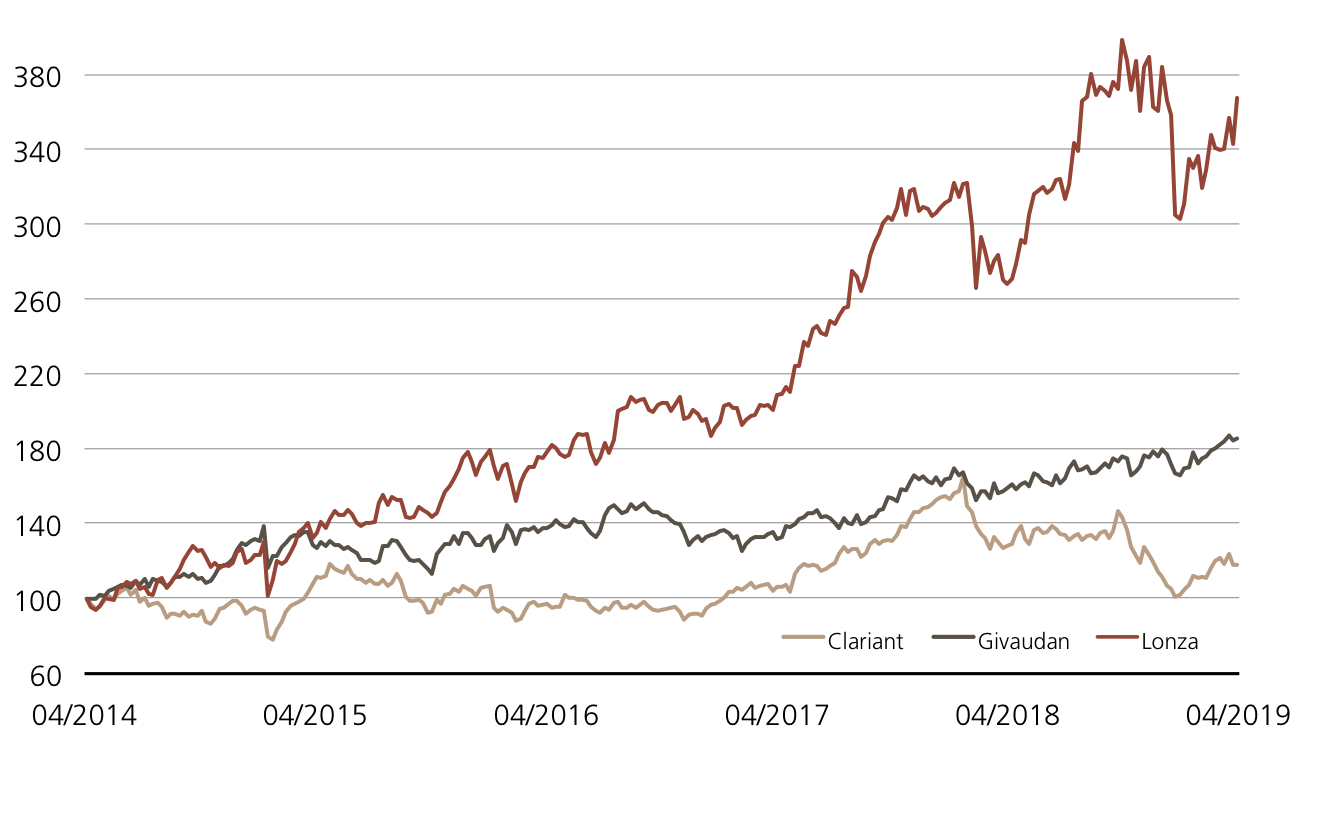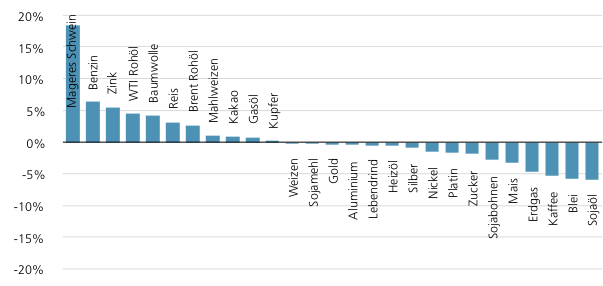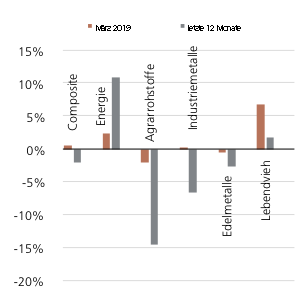Weekly-Hits: Globaler Aktienmarkt, Netflix & Walt Disney

- Thema 1: Globaler Aktienmarkt – Showdown in Washington
- Thema 2: Netflix / Walt Disney – Das Imperium schlägt zurück
- Thema 3: Rohstoffmonitor – April 2019
Globaler Aktienmarkt
Showdown in Washington
Via Twitter kündigte Donald Trump am 5. Mai die Erhöhung von einem Teil der Strafzölle auf chinesischen Einfuhren von zehn auf 25 Prozent an. Während diese Massnahme bereits am Freitag, 10. Mai in Kraft treten soll, möchte der US-Präsident in Kürze eine Abgabe in Höhe von 25 Prozent auf weitere Waren aus China einführen. Trump stellte einen direkten Bezug zu den laufenden Verhandlungen mit Peking her. Diese würden zu langsam vorankommen. Ausserdem drängt China dem Präsidenten zufolge auf Neuverhandlungen. «No» schreibt der Republikaner dazu am Ende seines Tweets. (Quelle: Twitter-Kanal @realDonaldTrump, 05.05.2019)
Ob damit das letzte Wort gesprochen ist, muss sich erst noch zeigen. Peking setzt jedenfalls weiter auf Verhandlungen. Der stellvertretende Ministerpräsident Liu He wird wie geplant am Donnerstag und Freitag bei Verhandlungen in den USA dabei sein. (Quelle: Thomson Reuters, Medienbericht, 07.05.2019) Investoren reagierten zunächst erleichtert auf die entsprechende Ankündigung des chinesischen Handelsministeriums. Doch dann machte sich rasch wieder die nach dem Vorstoss von Donald Trump aufgekommene Verkaufsstimmung breit.
Laut UBS CIO GWM besteht das Risiko einer erneuten Eskalation im Handelsstreit. Allerdings sehen die Experten auch Anzeichen für Trumps Willen, einen Kompromiss zu finden. Dem Präsidenten seien die wirtschaftlichen Folgen seiner Politik bewusst. Daneben bezeichnet CIO GWM das Wachstum der Weltwirtschaft, die erneuerte Unterstützung von Seiten der Geldpolitik sowie die Unternehmensgewinne als Triebfedern für steigende Aktienkurse. (Quelle: UBS CIO GWM, UBS House View Briefcase: «Will US-China trade talks break down?», 06.05.2019)
Chancen: Das Aktienspektrum der entwickelten Volkswirtschaften deckt der ETT (Symbol: ETWRLD) auf den MSCI™ World NTR Index ab. Aktuell sind in diesem Benchmark 1’636 Unternehmen aus 23 Ländern zu finden. Der ETT bildet den Index ohne Laufzeitbegrenzung ab. Dabei fallen keine Verwaltungsgebühren an.² Für Anleger, die bereits Aktien-Positionen halten oder wegen der skizzierten Marktrisiken vor einem direkten Engagement zurückscheuen, könnte der Callable Worst of Kick-In GOAL (Symbol: KDOBDU) auf SMI™, S&P 500™ und EURO STOXX 50™ interessant sein. Mit diesem Produkt ist selbst dann eine Rendite von 6.50 Prozent p.a. möglich, falls sich der jüngste Aufwärtstrend nicht fortsetzt respektive die Kurse moderat nachgeben. Entscheidend ist, dass keiner der drei Indizes auf oder unter die Barriere von 60 Prozent des Startniveaus fällt.
Risiken:Die vorgestellten Produkte sind nicht kapitalgeschützt. Beim ETT kommt es zu Verlusten, wenn der zugrundeliegende Index fällt. Notiert einer derBasiswerte des Kick-In GOALs während der Laufzeit einmal auf oder unter dem jeweiligen Kick-In Level (Barriere) und kommt zudem das Callable Feature nicht zum Tragen, kann die Tilgung am Verfalltag durch Bartilgung entsprechend der (vom Strike aus) schwächsten Performance aus dem Indextrio erfolgen (höchstens jedoch zum Nominalwert zuzüglich Coupon). In diesem Fall sind Verluste wahrscheinlich. Zudem trägt der Anleger bei Strukturierten Produkten das Emittentenrisiko, so dass das eingesetzte Kapital – unabhängig von der Entwicklung des Basiswertes – im Falle einer Insolvenz der UBS AG verloren gehen kann.

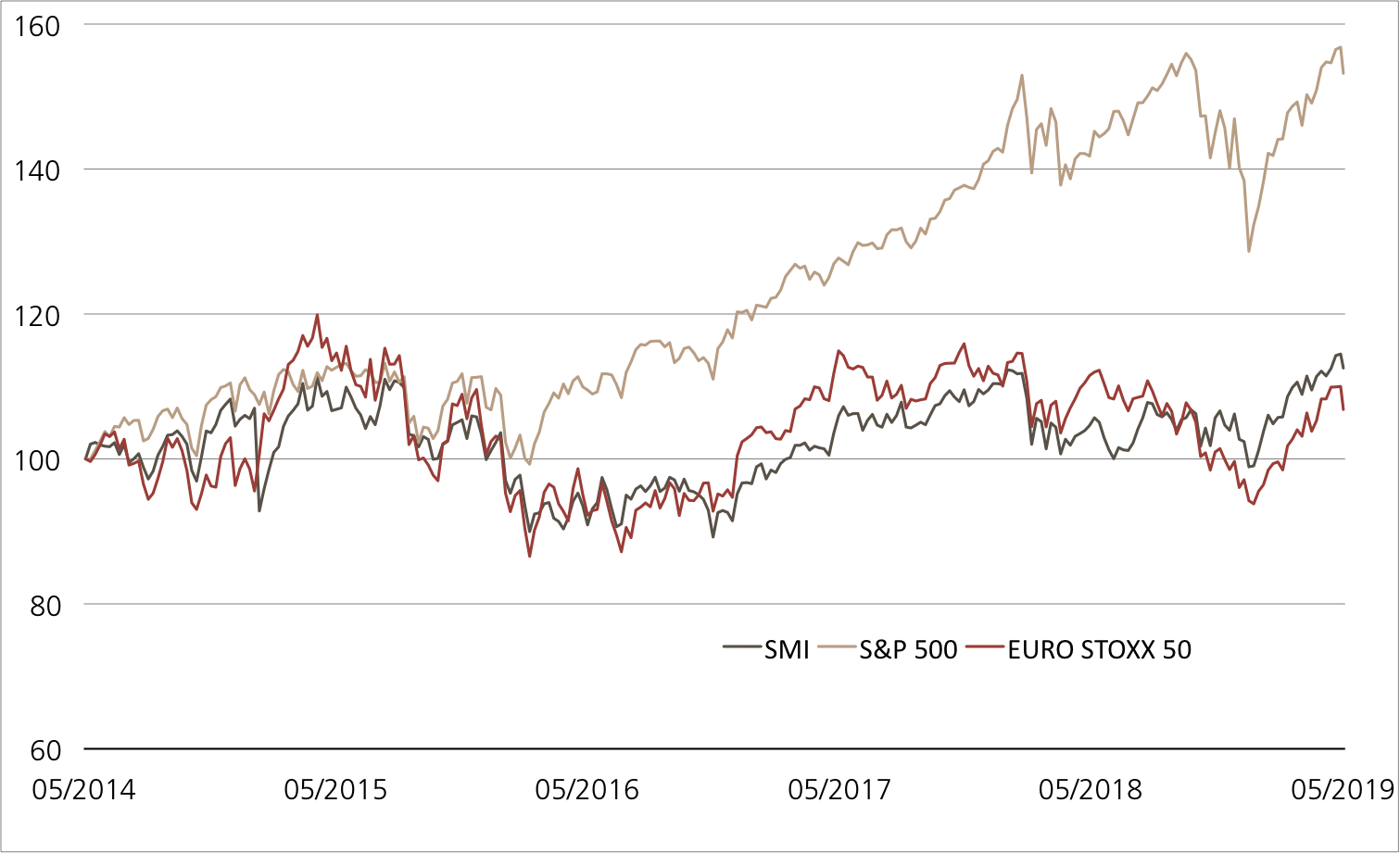
²) Die Konditionen der ETTs werden jährlich überprüft und können mit einer Frist von 13 Monaten nach Bekanntgabe angepasst werden
| Index | Stand | Woche¹ | |
|---|---|---|---|
| SMI™ | 9’621.96 Pkt. | -1.5% | |
| SLI™ | 1’497.85 Pkt. | -2.0% | |
| S&P 500™ | 2’879.42 Pkt. | -1.5% | |
| EURO STOXX 50™ | 3’417.26 Pkt. | -2.8% | |
| S&P™ BRIC 40 | 4’255.82 Pkt. | -3.2% | |
| CMCI™ Compos. | 905.57 Pkt. | -1.9% | |
| Gold(Feinunze) | 1’281.40 USD | -0.2% | |
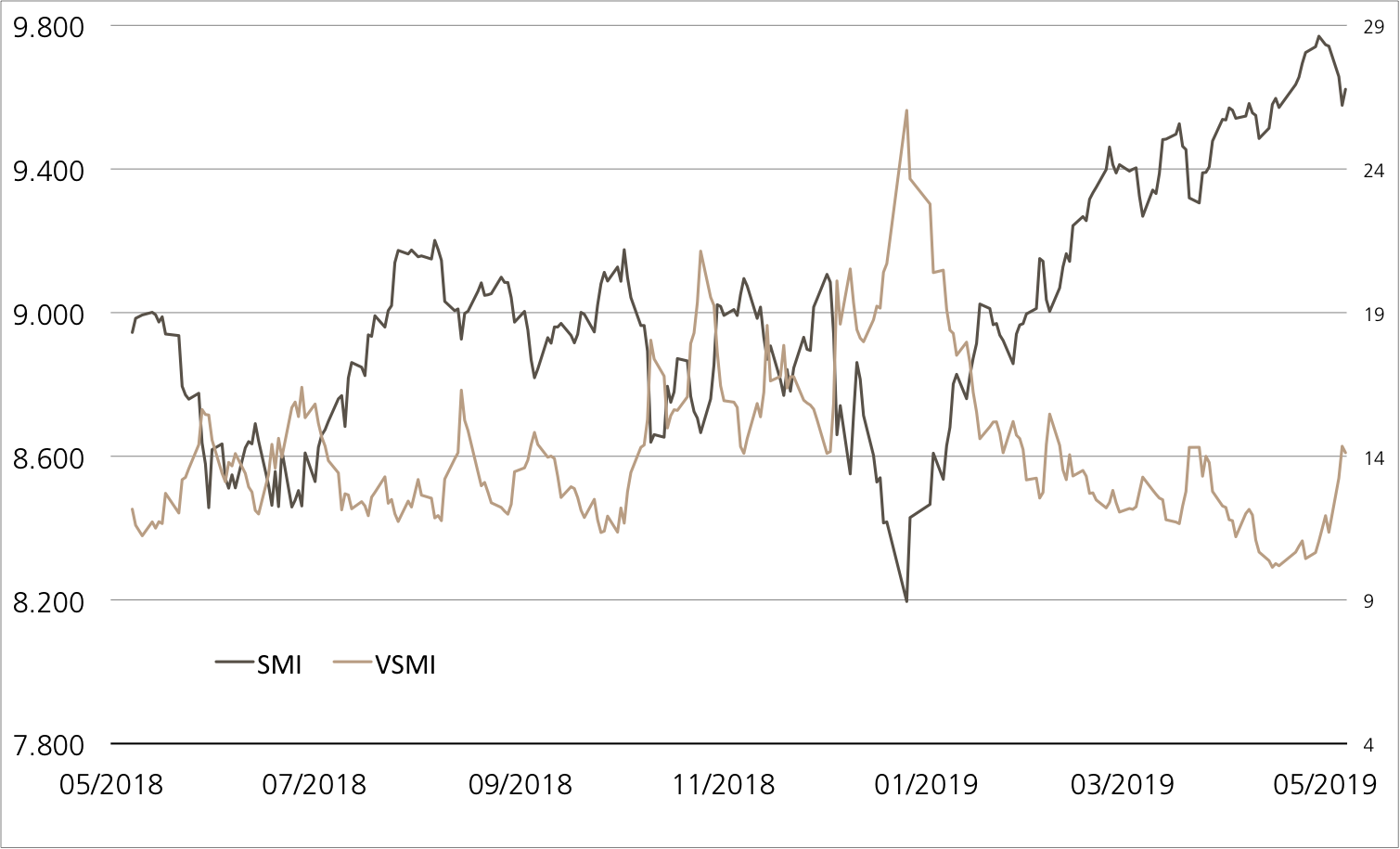
Netflix / Walt Disney
Das Imperium schlägt zurück
Nur elf Tage nach dem Kinostart hatte»Avengers: Endgame»weltweit zwei Milliarden US-Dollar eingespielt. Damit ist der Superheldenfilm aus den zum Disney-Imperium zählenden Marvel Studios einer von gerade einmal fünf Streifen, die es über diese Schallmauer geschafft haben. (Quelle: Walt Disney, Medienmitteilung, 05.05.2019) Da der Kinostart erst Ende April erfolgt ist, floss das Finale der Avengers-Reihe noch nicht in die Resultate für das abgelaufene Quartal ein. Am 8. Mai (nach Redaktionsschluss) hat der Mickey Mouse-Konzern den Zwischenbericht veröffentlicht. Bei der Telefonkonferenz mit dem Management dürfte auch der für November geplante Start des Streamingportals «Disney+» eine Rolle gespielt haben.
Obwohl der Konkurrenzdruck auf Netflix zunimmt – auch Apple möchte im Herbst einen neuen Service starten –, ist der Branchenkrösus an der Wall Street schwer angesagt: Im bisherigen Jahresverlauf verteuerte sich die Netflix-Aktie um annähernd 40 Prozent.¹ Auch bei den Konsumenten ist die Begeisterung für den Pionier ungebrochen. Im ersten Quartal zählte Netflix weltweit knapp 7.9 Millionen neue Abonnenten – deutlich mehr als von Analysten im Schnitt erwartet. Den Konsens schlug das Unternehmen auch mit seinen Umsatz- und Gewinnkennzahlen. Beim Ausblick sorgte Netflix dagegen für einen Wermutstropfen. Für das laufende zweite Quartal rechnet das Management mit fünf Millionen zusätzlichen Kunden. Die Wall Street hatte zuvor für den Zeitraum April bis Juni 7.48 Millionen zusätzliche Abonnenten erwartet. (Quelle: Thomson Reuters, Medienbericht, 16.04.2019)
Chancen:Ungeachtet vom weiteren Kursverlauf bei Netflix und Walt Disney wirft der Callable Kick-In GOAL (Symbol: KDNZDU) vierteljährlich einen Coupon in Höhe von 11.00 Prozent p.a. ab. Die Rückzahlung des Nominals ist an eine Barriere gekoppelt. Die beiden Wall Street-Aktien erhalten zur Anfangsfixierung ein Sicherheitspolster von jeweils 45 Prozent. Beginnend mit dem 15. Mai 2020 kann die Emittentin die Emission alle drei Monate kündigen und das Nominal mitsamt dem anteiligen Coupon vorab zurückzahlen.
Risiken:Worst-of Kick-In GOALs sind nicht kapitalgeschützt. Notiert einer der Basiswerte während der Laufzeit einmal auf oder unter dem jeweiligen Kick-In Level (Barriere) und kommt zudem das Callable Feature nicht zum tragen, kann die Rückzahlung am Verfalltag durch Bartilgung entsprechend der (vom Strike aus) schwächsten Performance aus dem Trio erfolgen (höchstens jedoch zum Nominalwert zuzüglich Coupon). In diesem Fall sind Verluste wahrscheinlich. Zudem trägt der Anleger bei Strukturierten Produkten das Emittentenrisiko, so dass das eingesetzte Kapital – unabhängig von der Entwicklung der Basiswerte – im Falle einer Insolvenz der UBS AG verloren gehen kann.
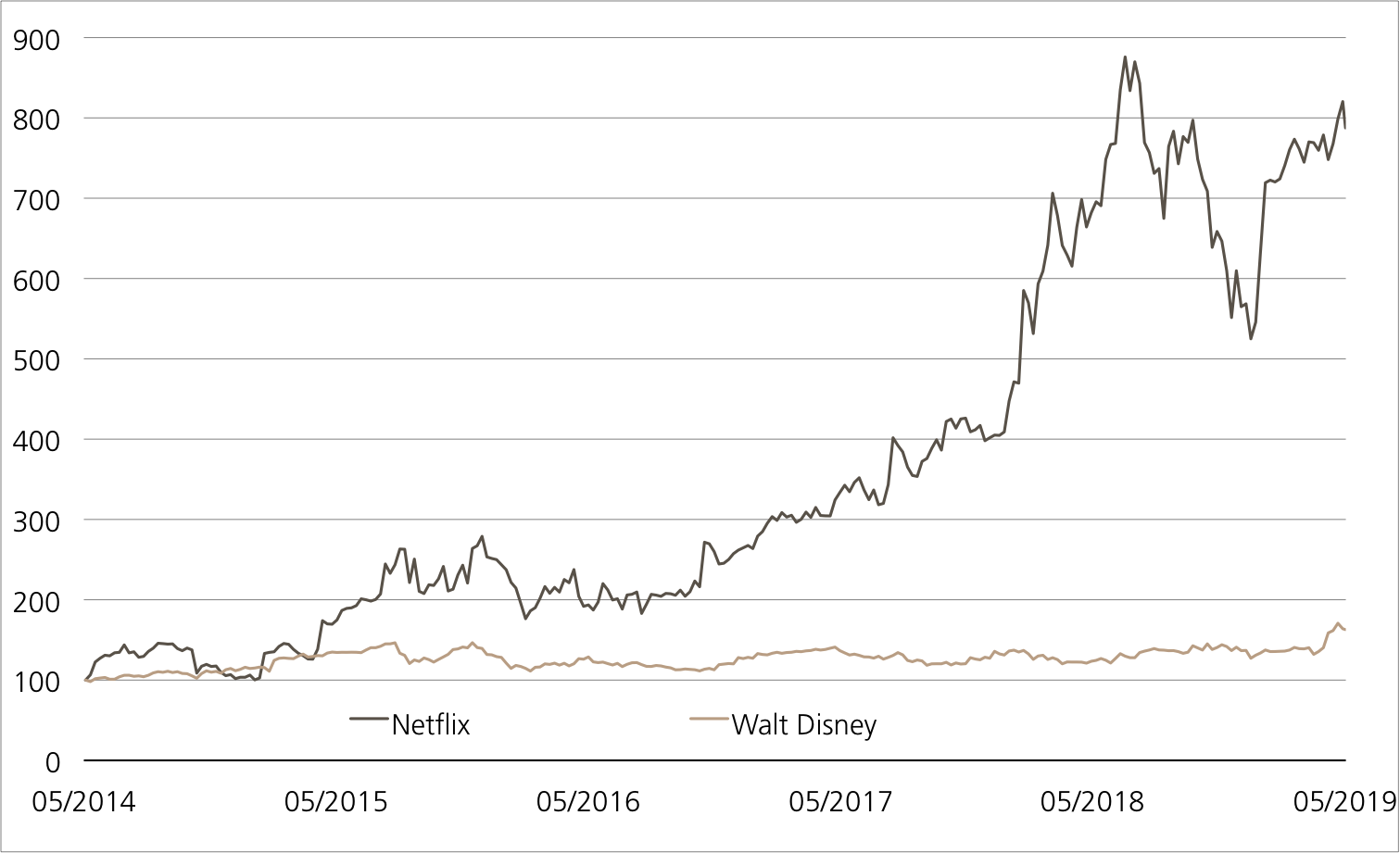
11.00% p.a. Callable Worst of Kick-In GOAL auf Netflix / Walt Disney
| Remove | ||
|---|---|---|
| Symbol | KDNZDU | |
| SVSP Name | Barrier Reverse Convertible | |
| SVSP Code | 1230 (Callable) | |
| Basiswerte | Netflix / Walt Disney | |
| Handelswährung | USD | |
| Coupon | 11.00% p.a. | |
| Kick-In Level (Barriere) | 55% | |
| Verfall | 17.05.2021 | |
| Emittentin | UBS AG, London | |
| Zeichnung bis | 15.05.2019, 15:00 Uhr | |
Termsheet Weitere Produkte sowie Informationen zu Chancen und Risiken finden Sie unter: ubs.com/keyinvest Quelle: UBS AG Stand: 08.05.2019
²) Die Konditionen der ETTs werden jährlich überprüft und können mit einer Frist von 13 Monaten nach Bekanntgabe angepasst werden
Rohstoffmonitor
April 2019

Total-Return-Performance der UBS Bloomberg CMCI Einzelrohstoff-Indizes im April 2019 in US-Dollar.
Stand: 30.04.2019Quelle: UBS AG
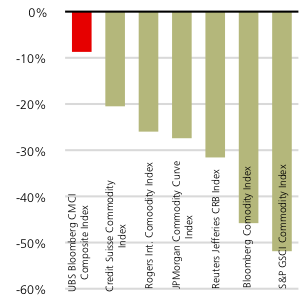

| Produkt | Symbol | Währung | Monatsperformance¹ | Anteil am Gesamtvolumen | |
|---|---|---|---|---|---|
| UBS ETC on CMCI Gold | CGCCI | CHF | -1.4% | 14.4% | |
| UBS ETC on CMCI Composite | TCMCI | USD | -0.8% | 13.6% | |
| UBS ETC on CMCI WTI Crude Oil | TCLCI | USD | 4.1% | 12.8% | |
| UBS ETC on CMCI Industrial Metals | TIMCI | USD | -2.9% | 10.3% | |
| UBS ETC on CMCI Energy | TENCI | USD | 3.0% | 9.1% | |
| UBS ETC on CMCI DJ UBS Maturity | TDJCM | USD | -1.3% | 8.8% | |
| UBS ETC on CMCI WTI Crude Oil | ECLCI | EUR | 2.8% | 4.6% | |
| UBS ETC on CMCI Copper | TLPCI | USD | -0.9% | 4.4% | |
| UBS ETC on CMCI WTI Crude Oil | CCLCI | CHF | 3.3% | 4.1% | |


